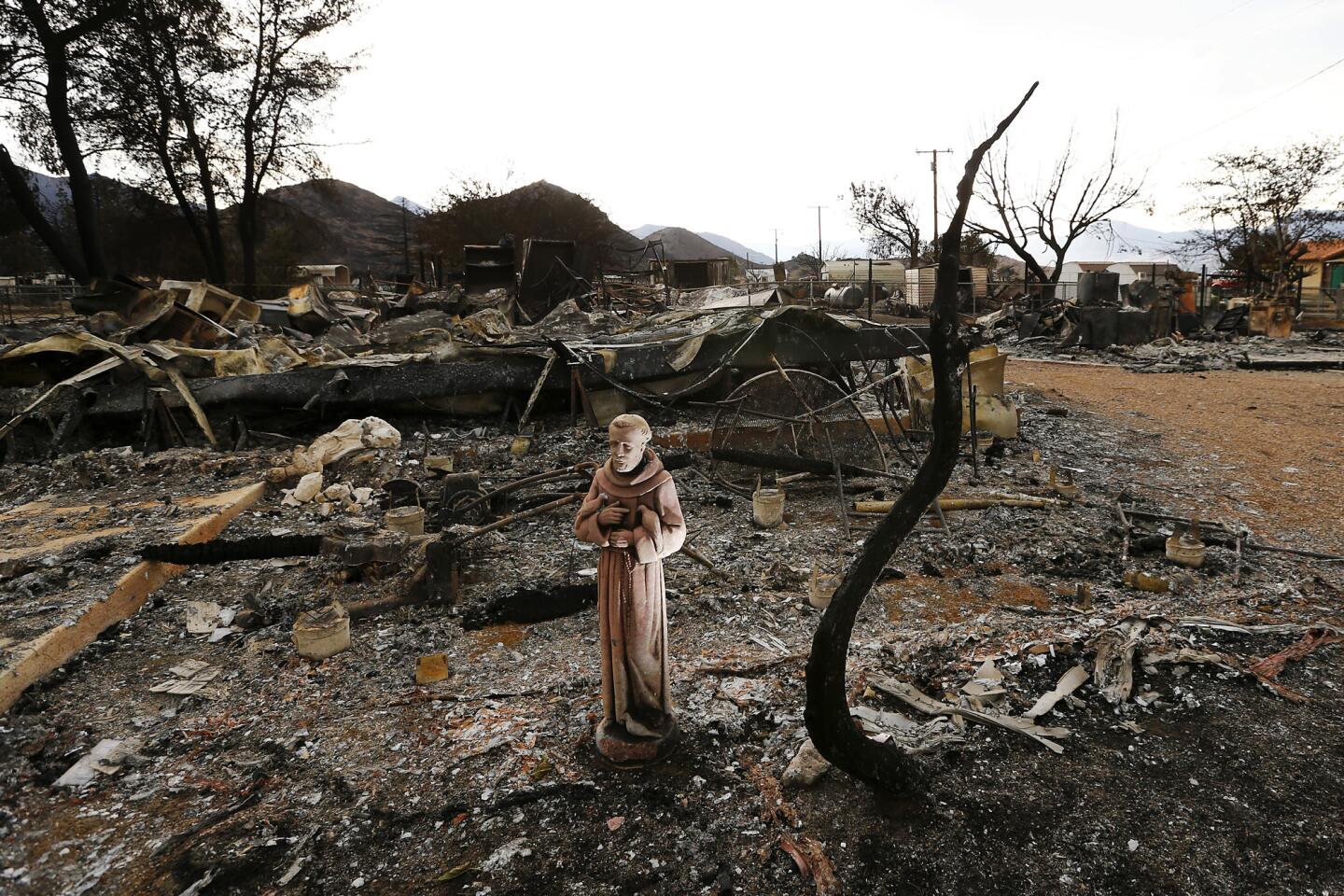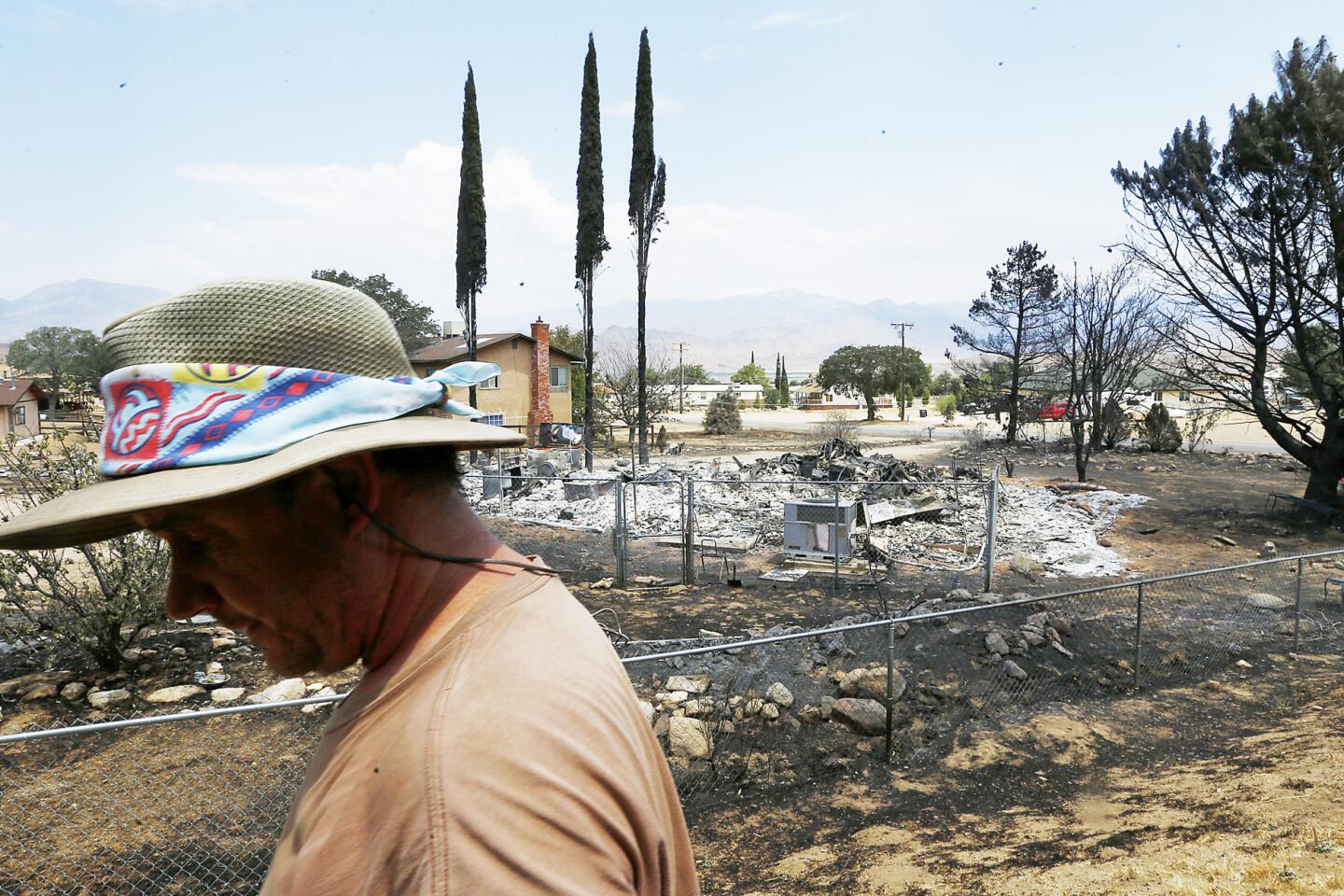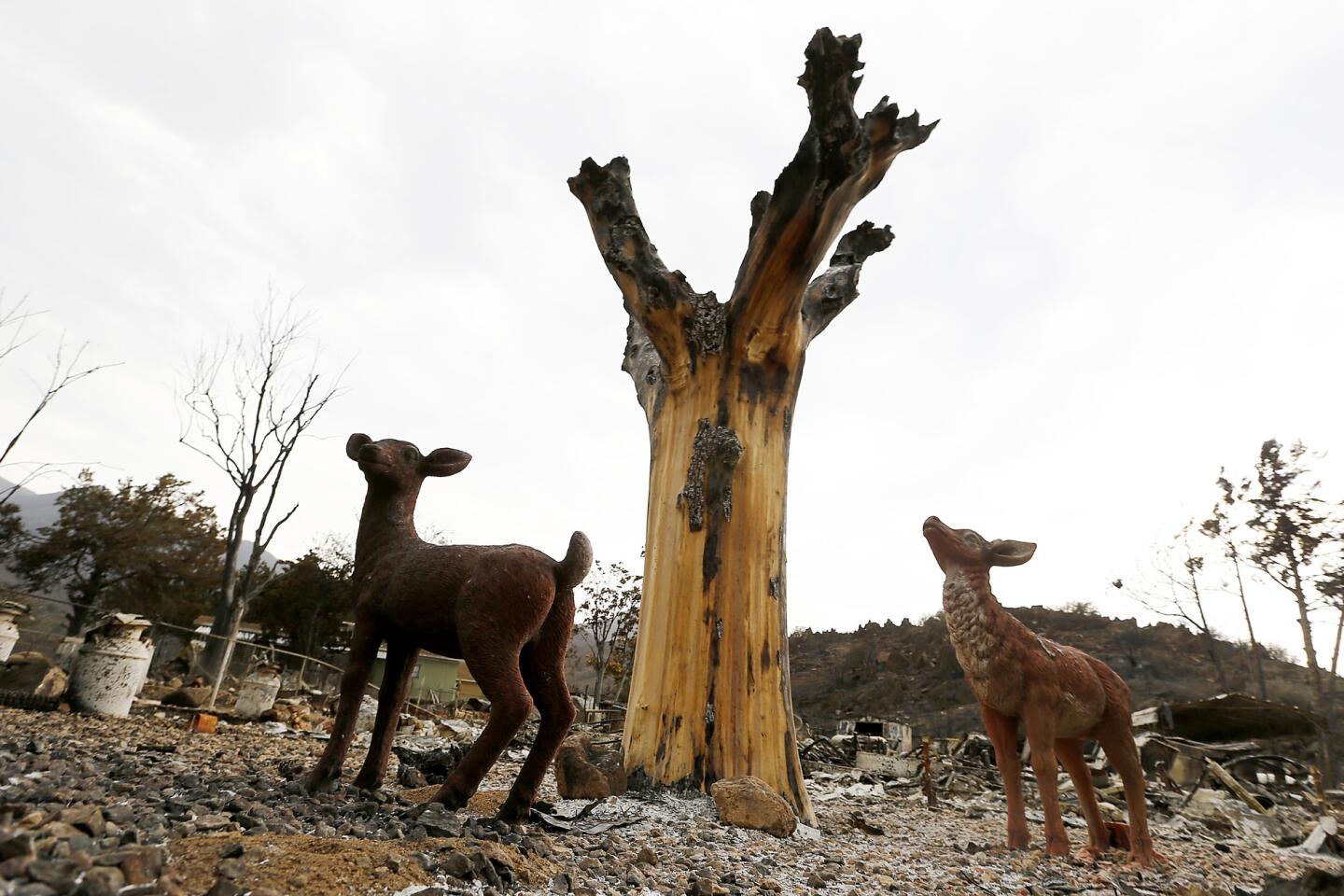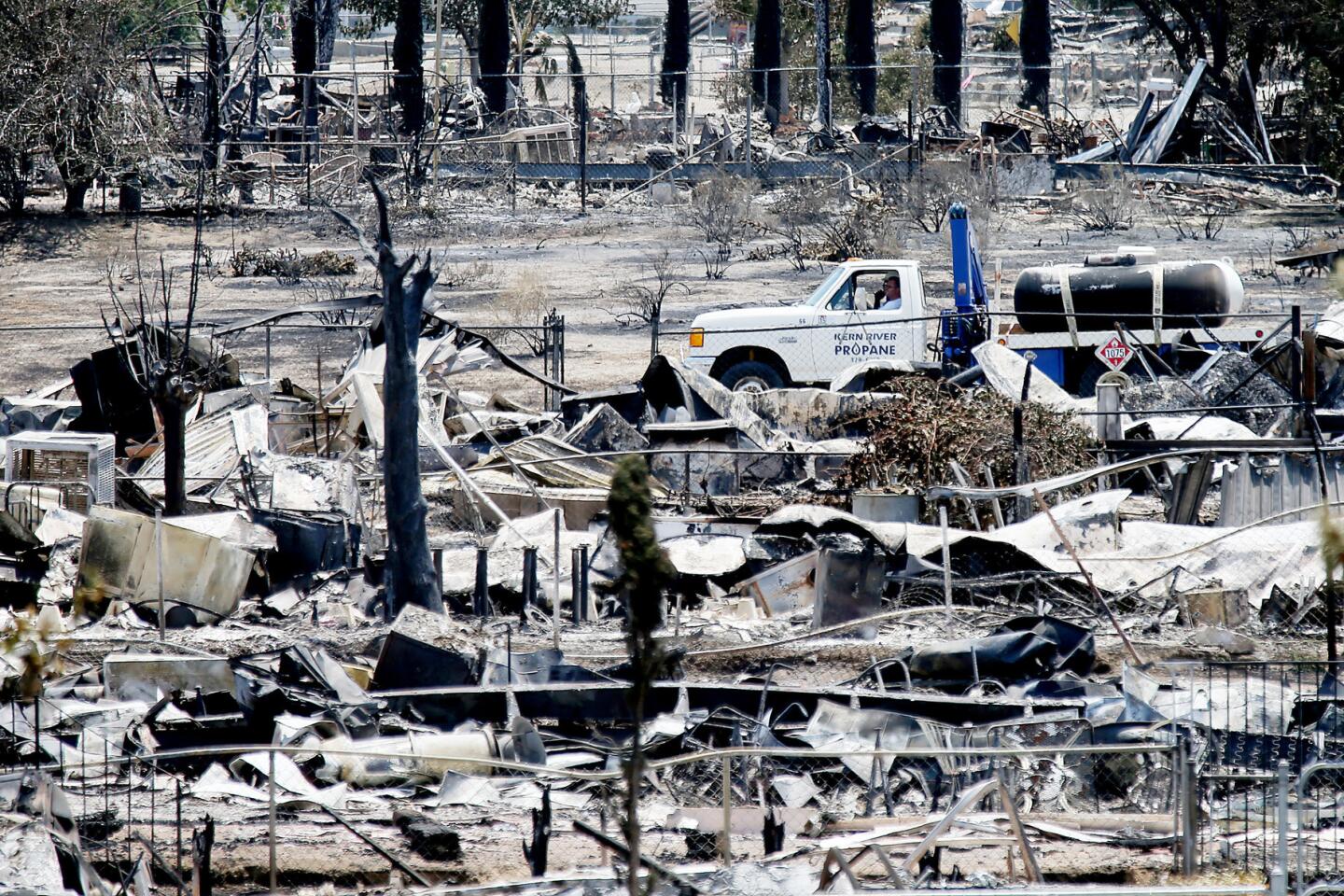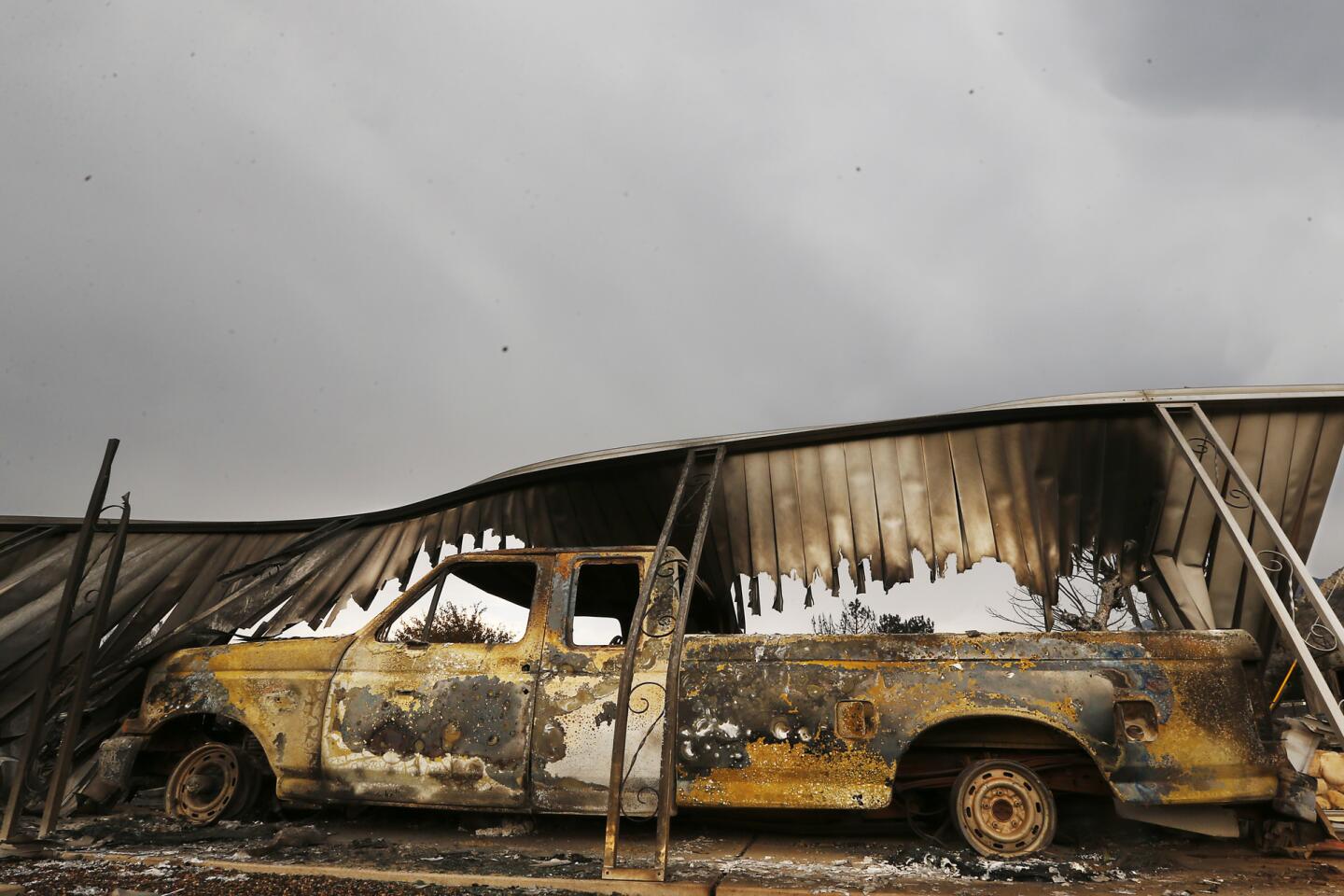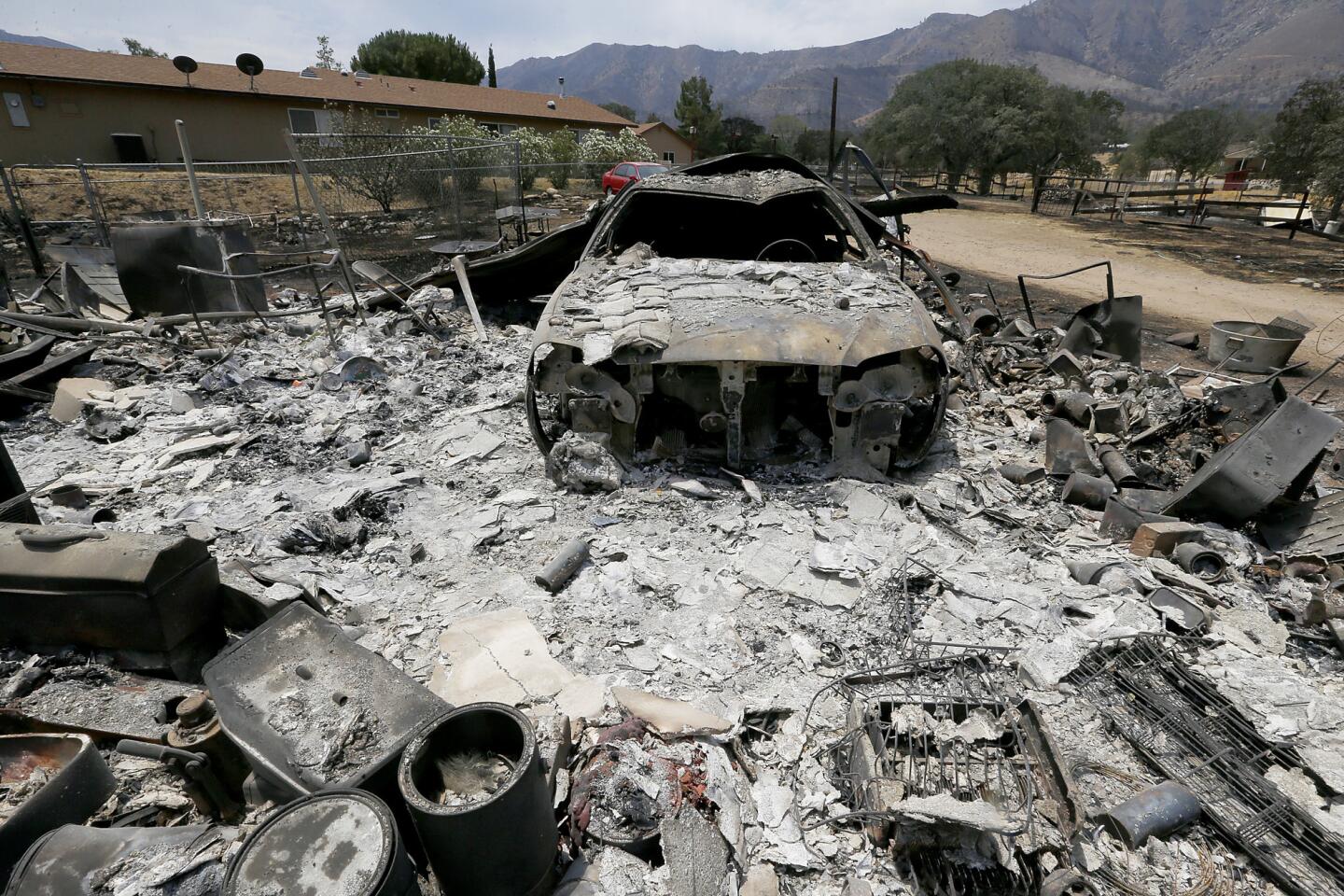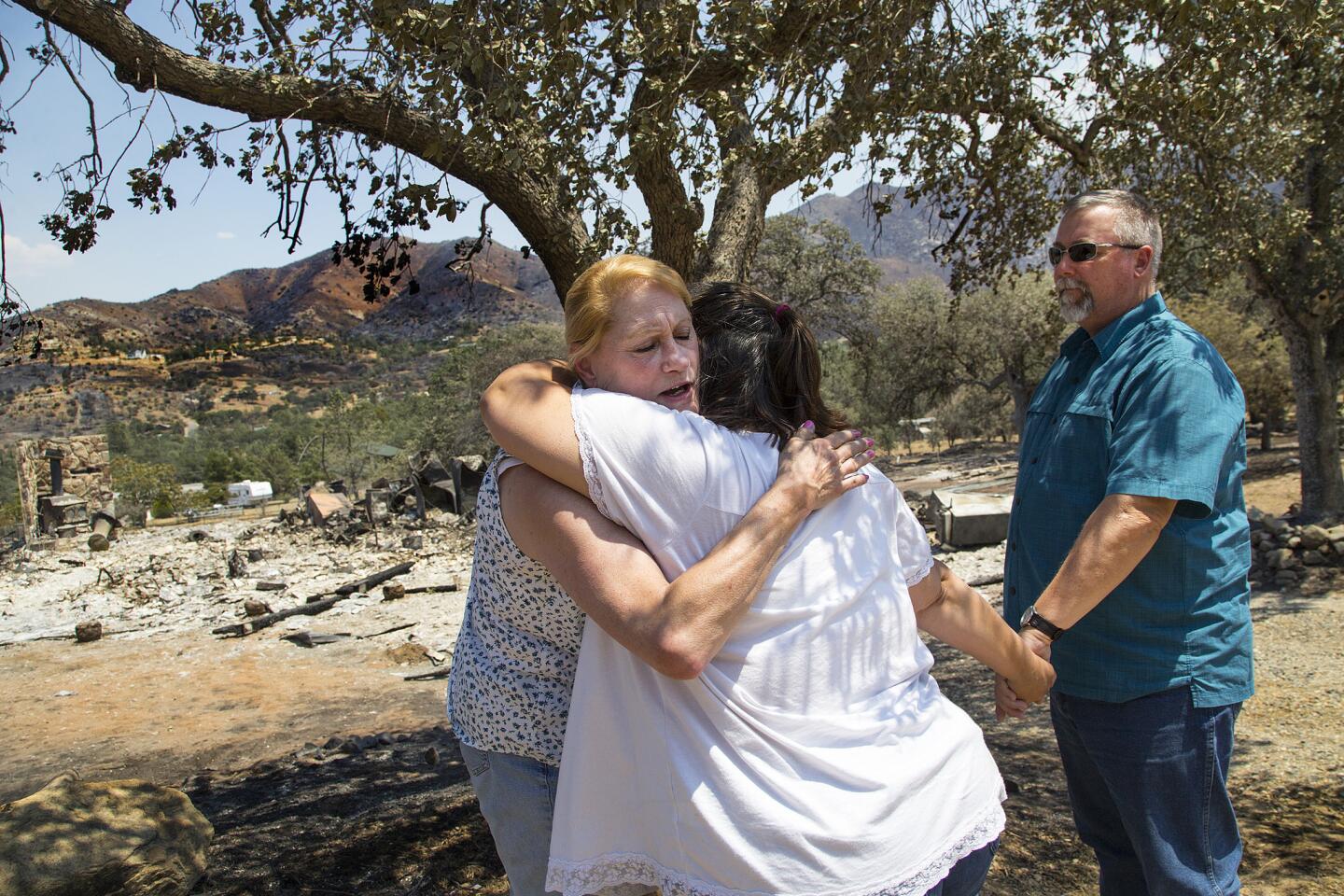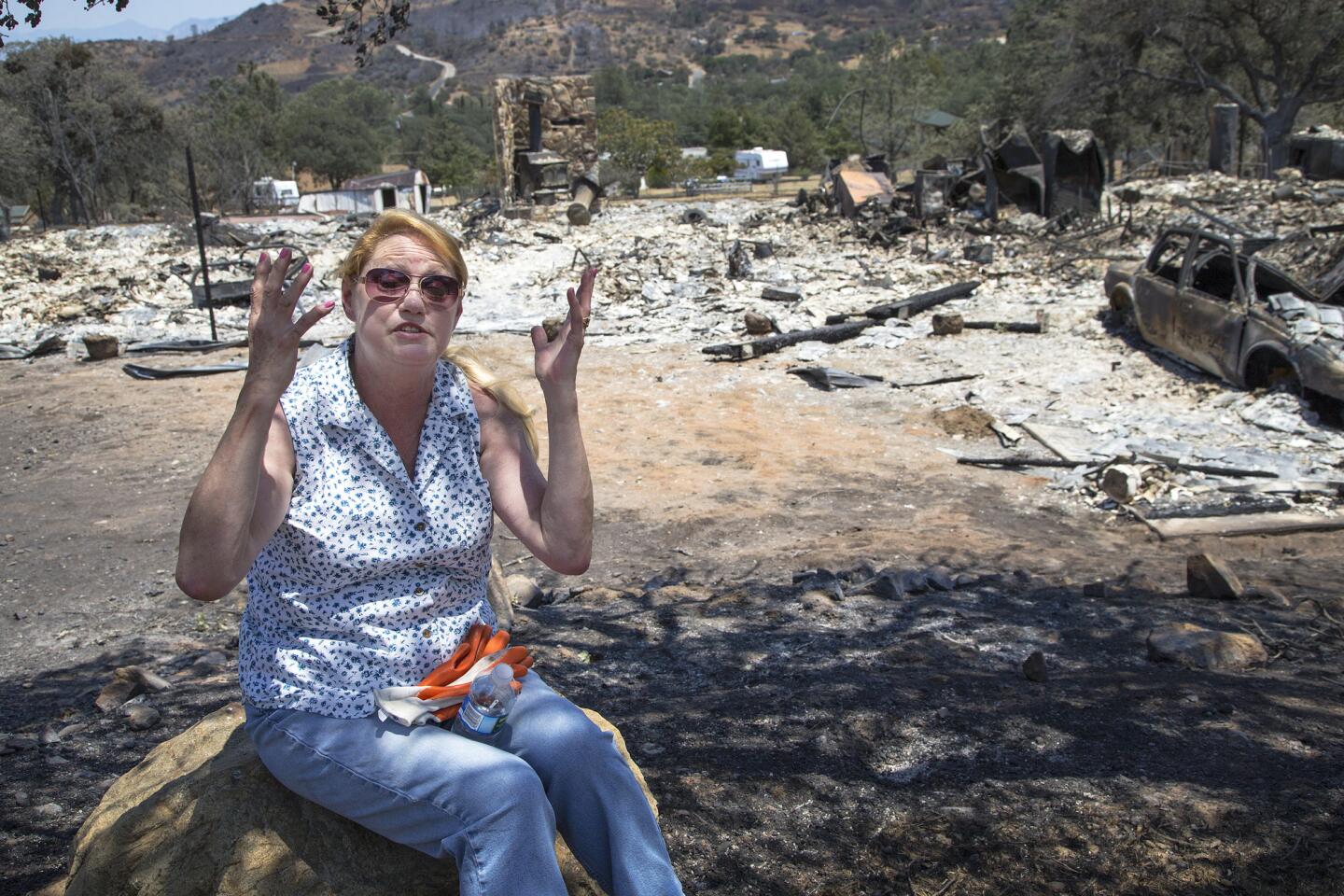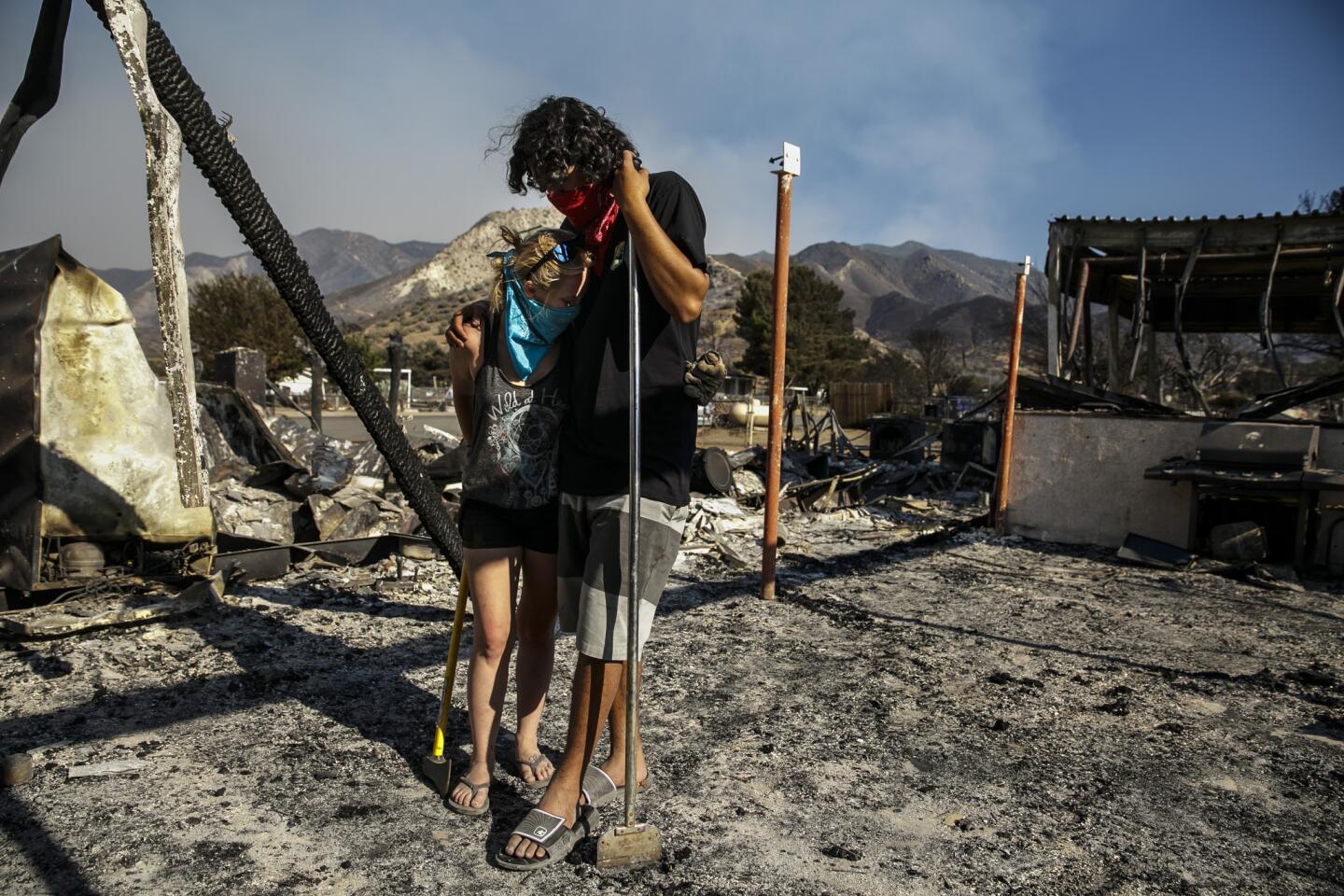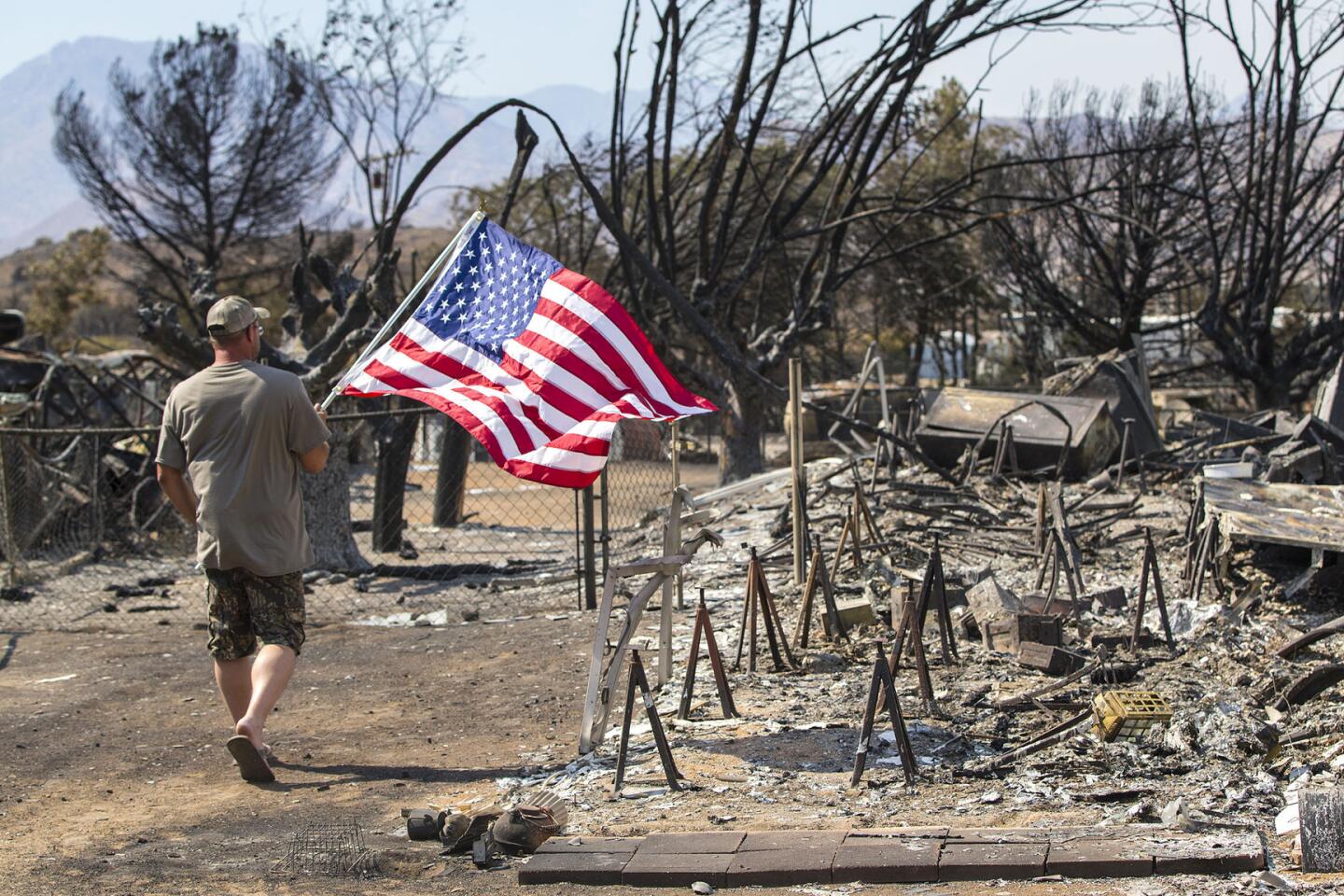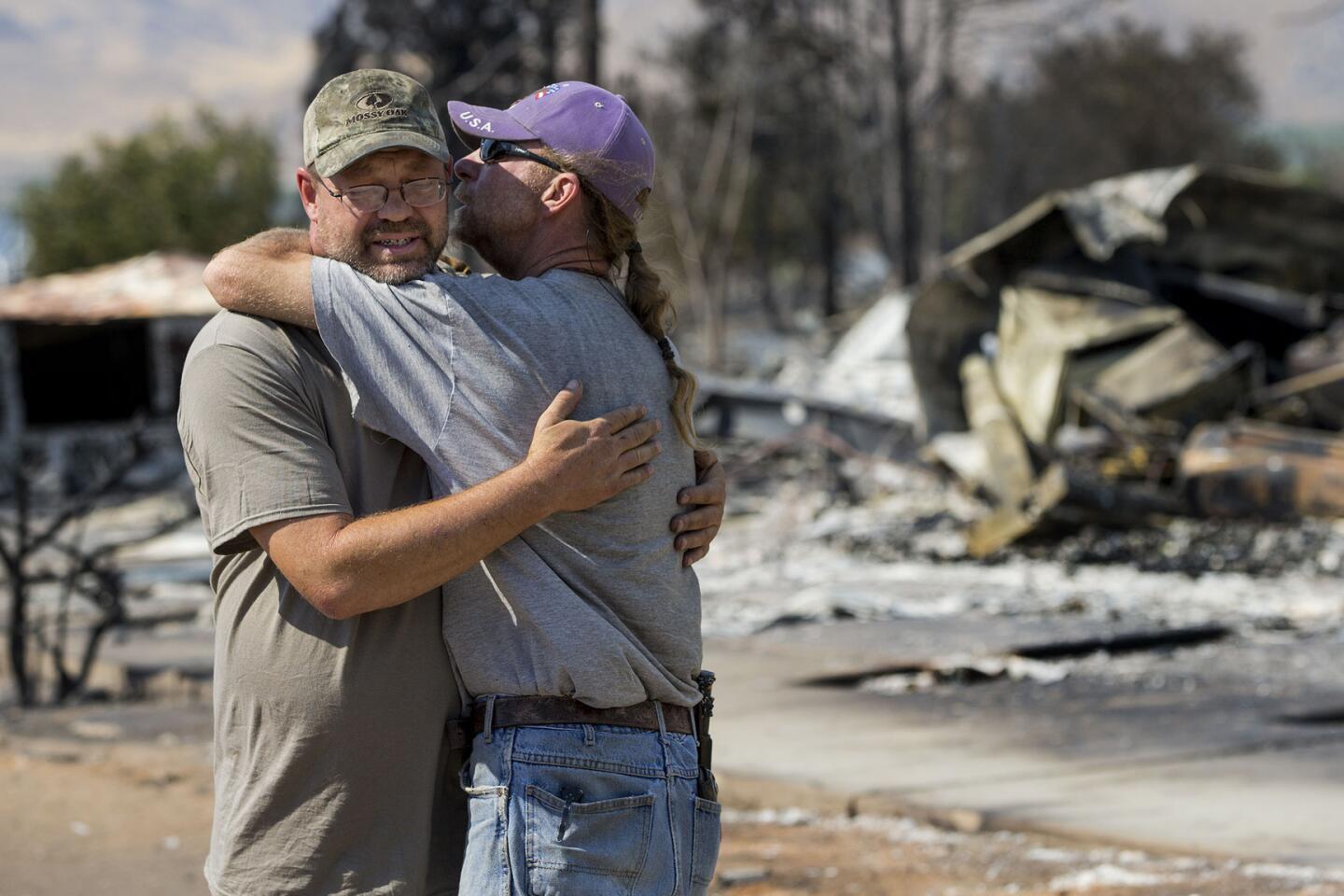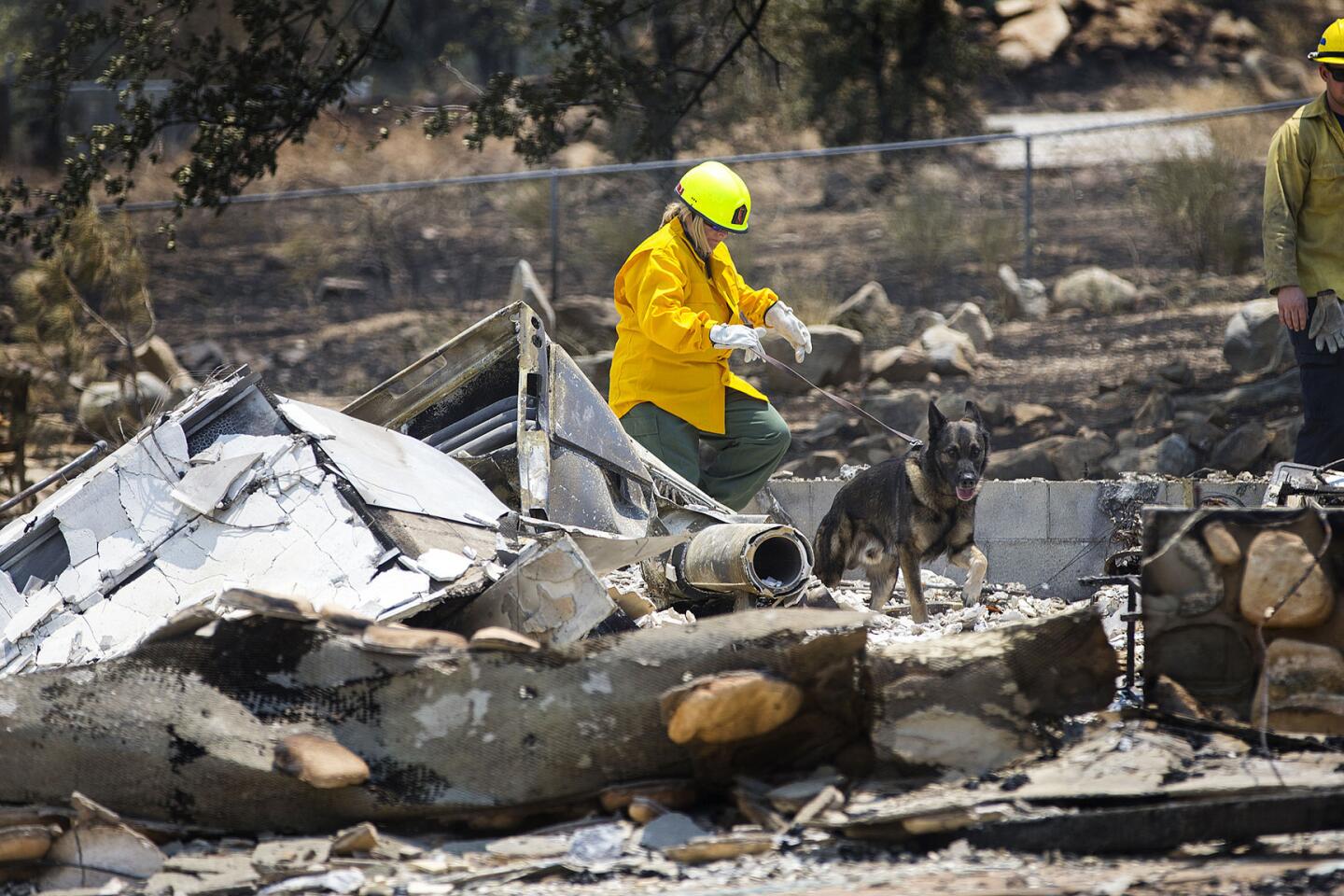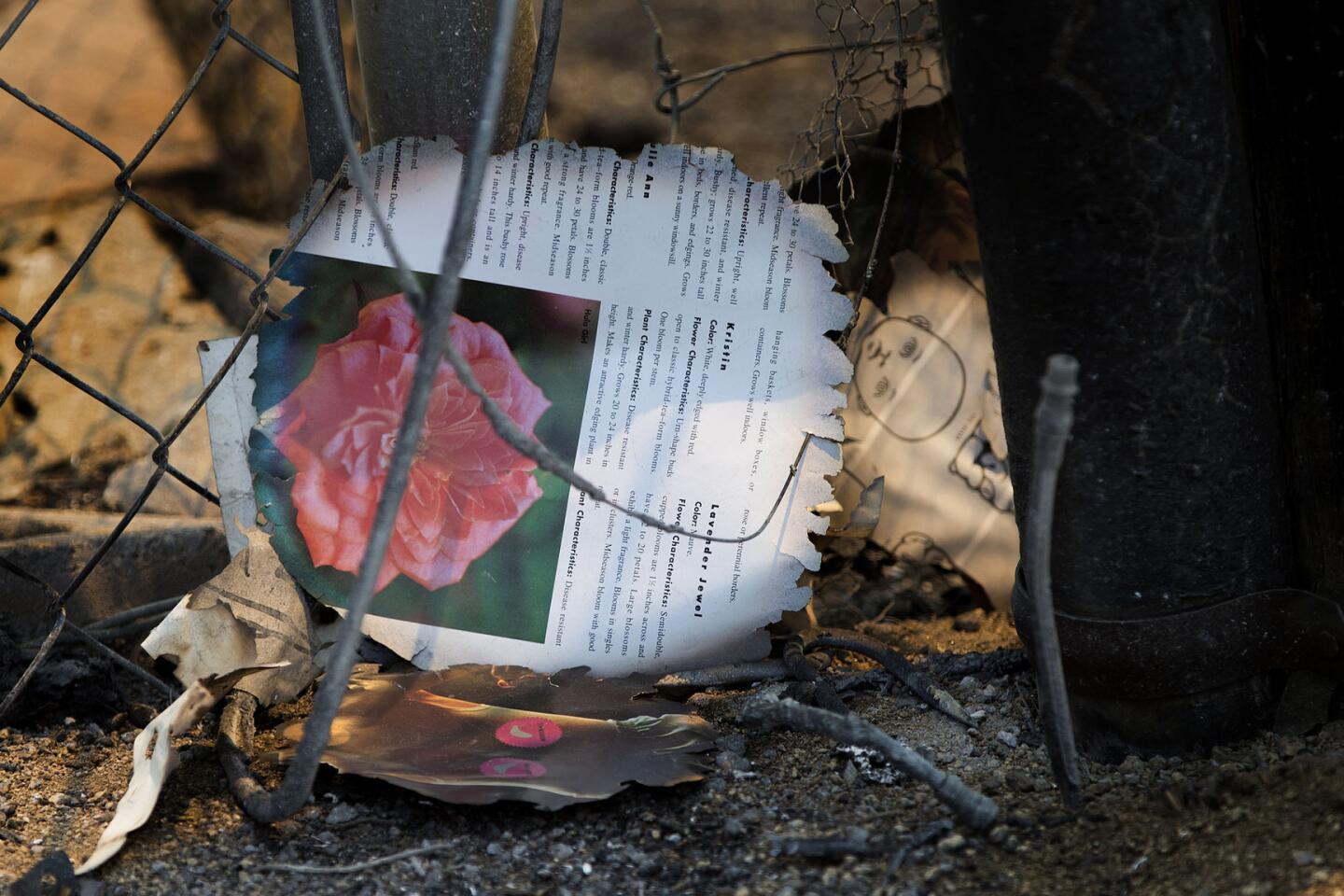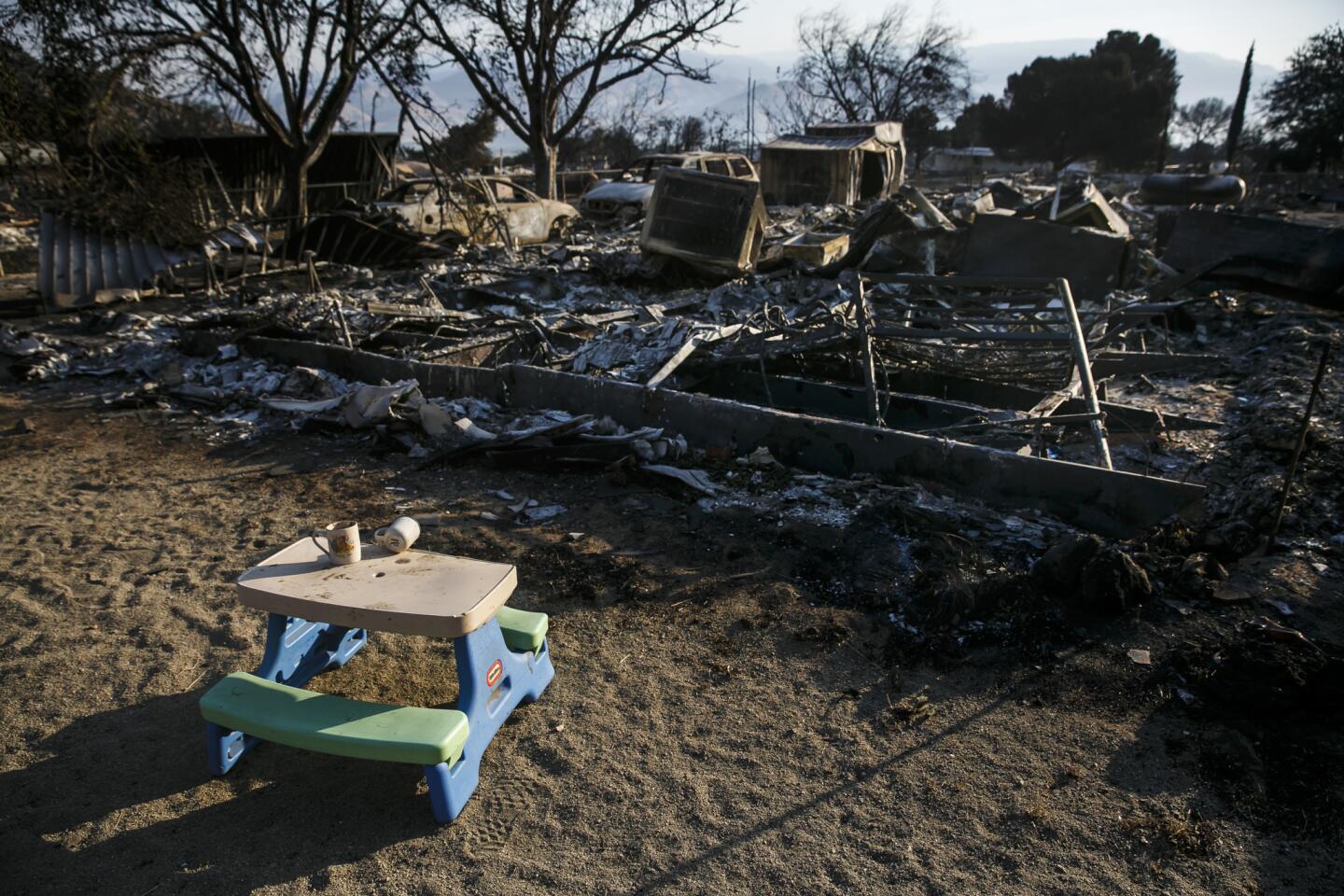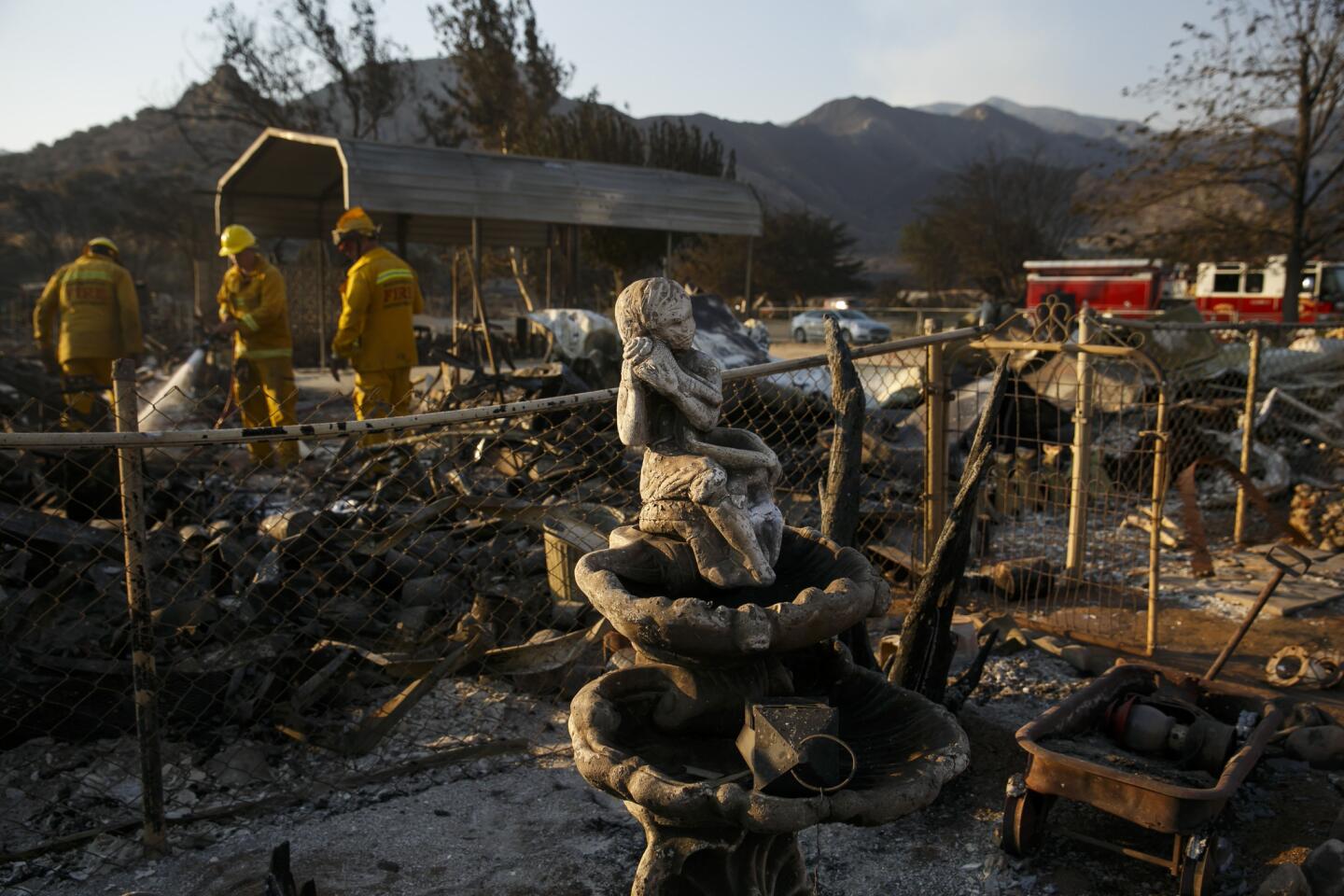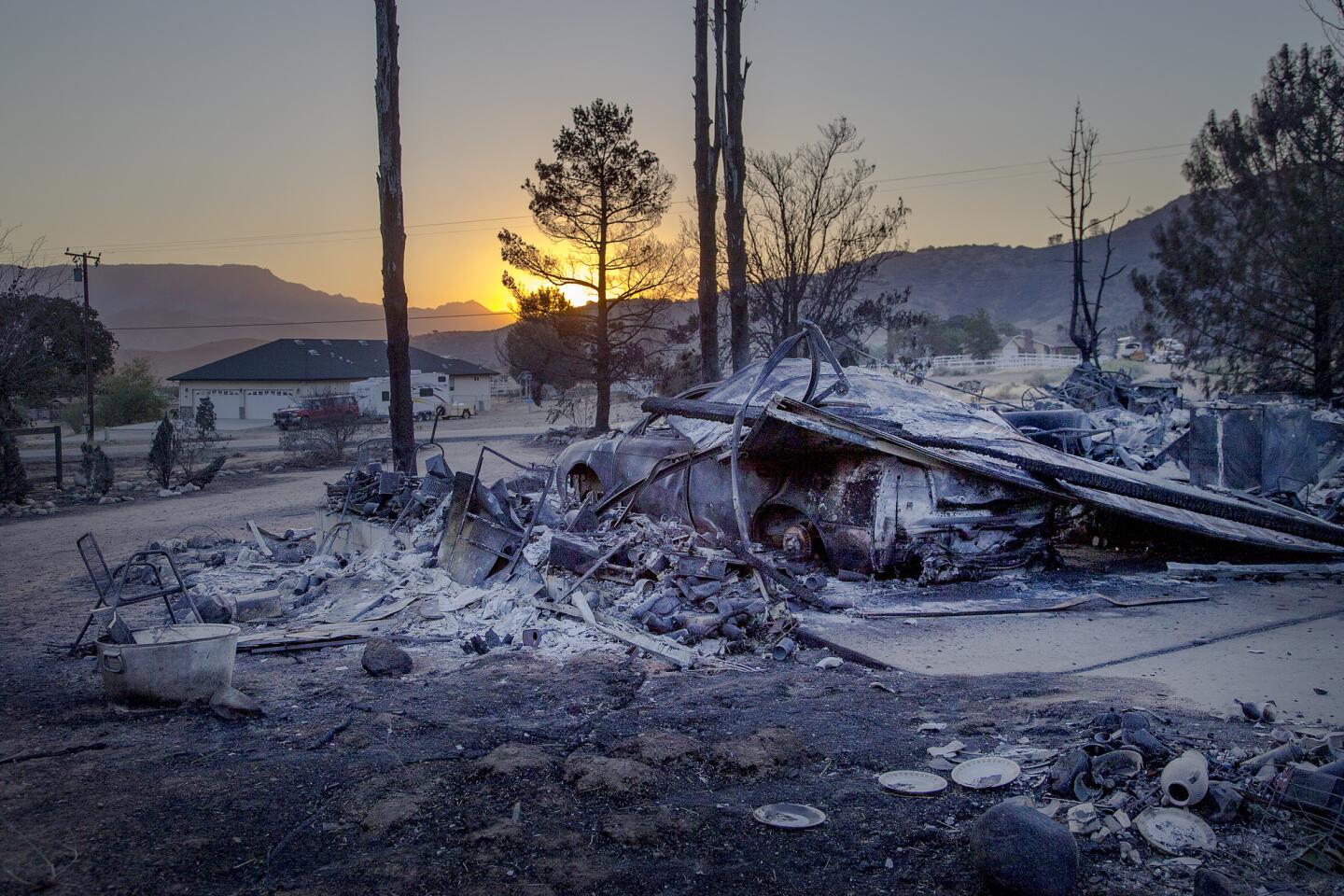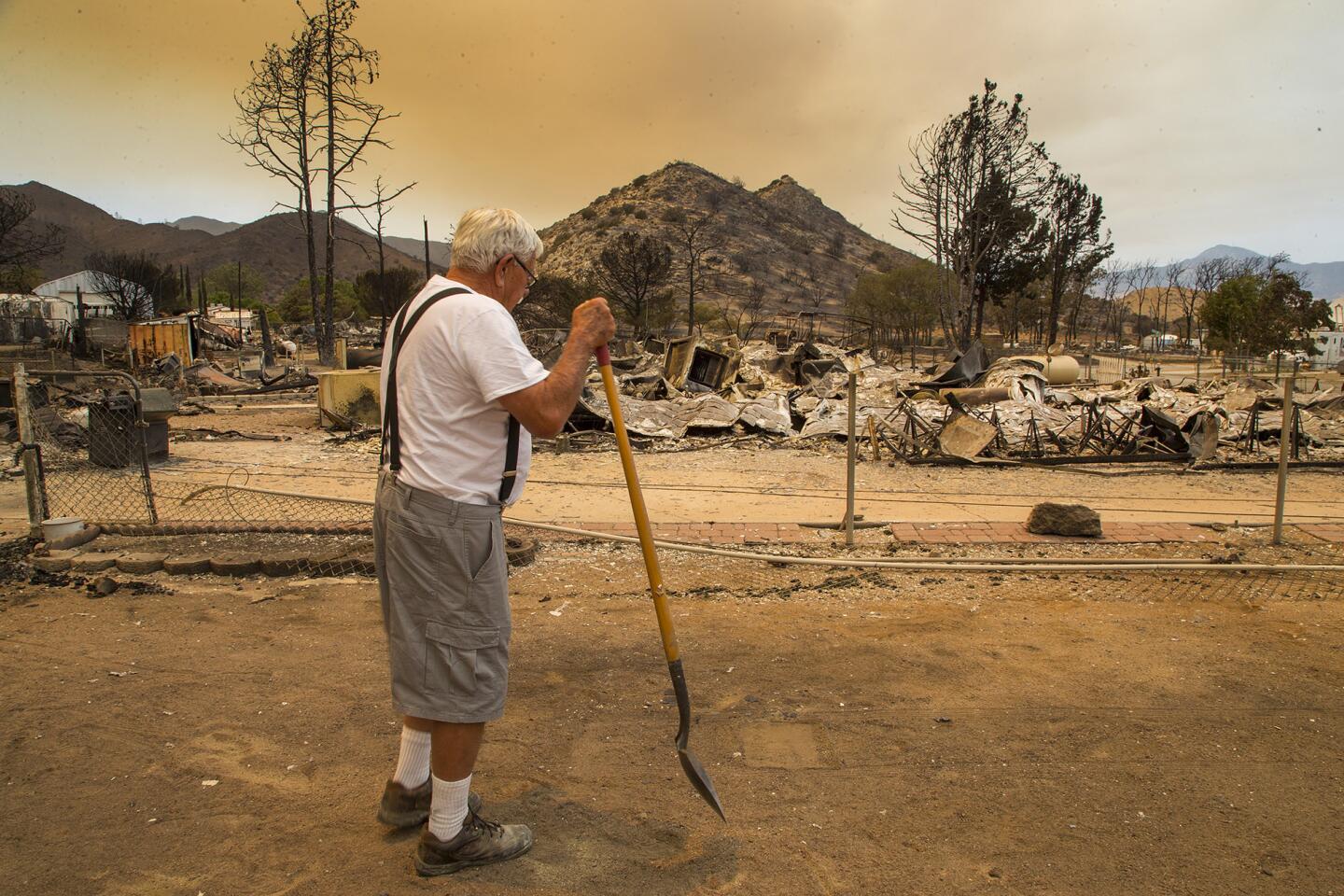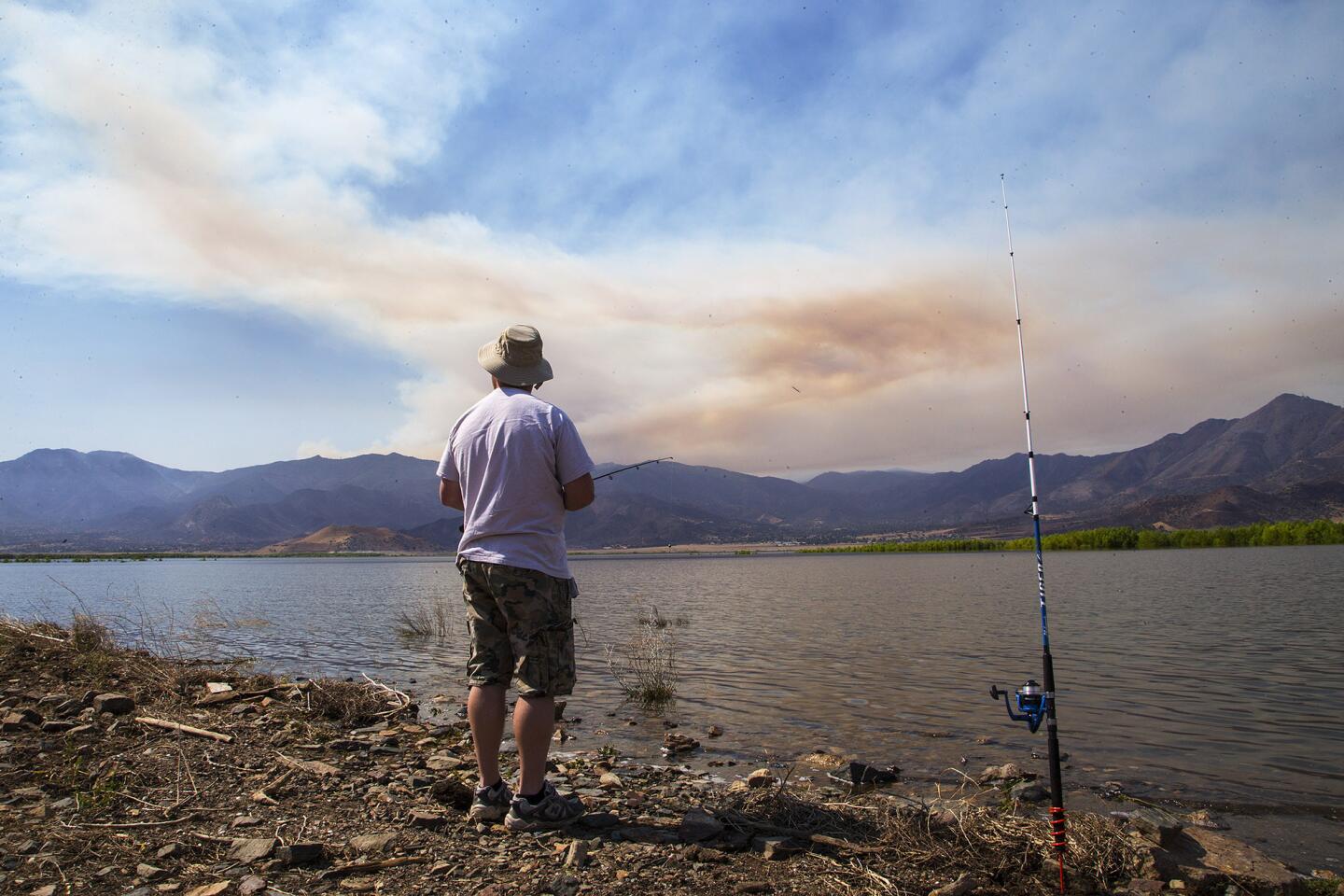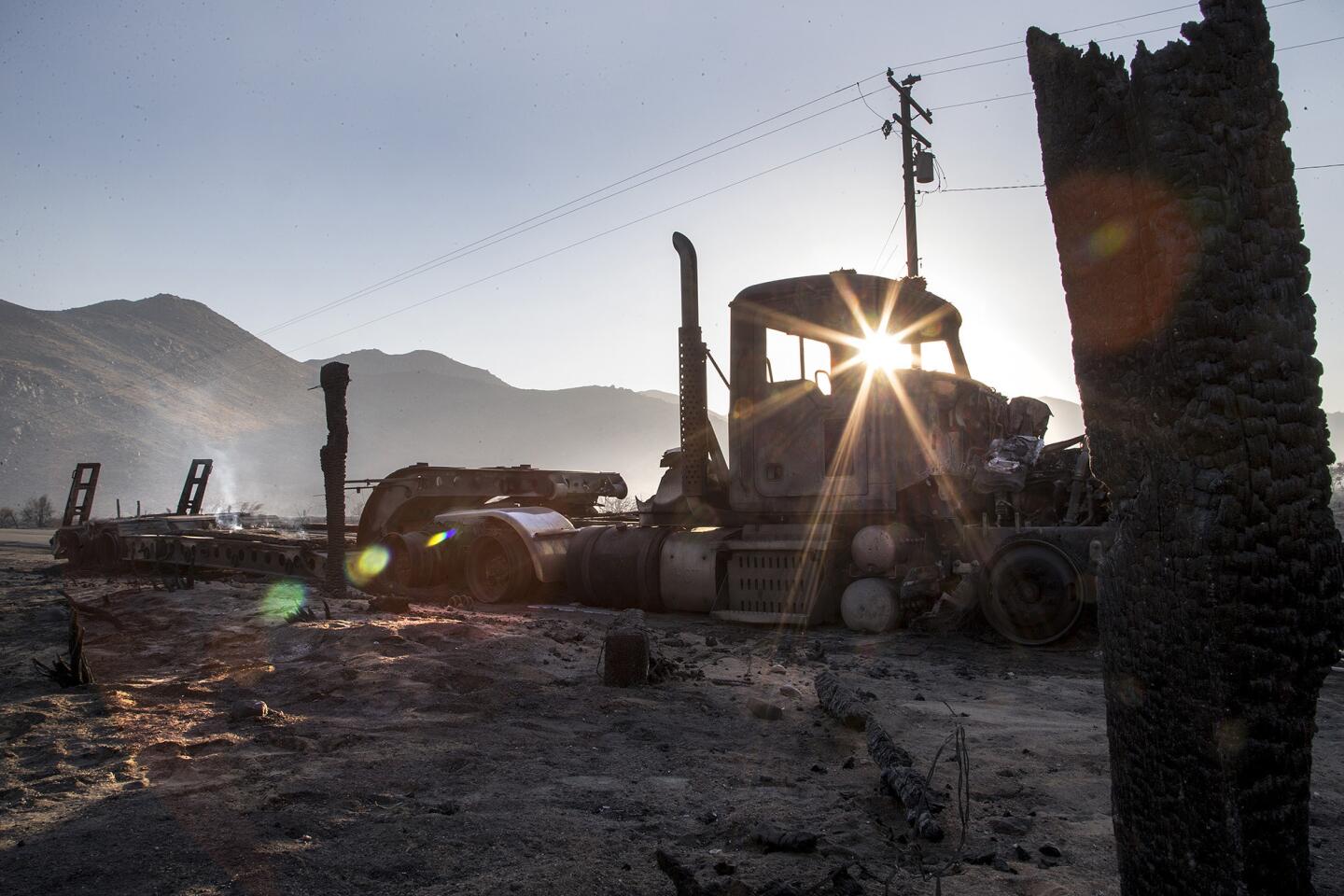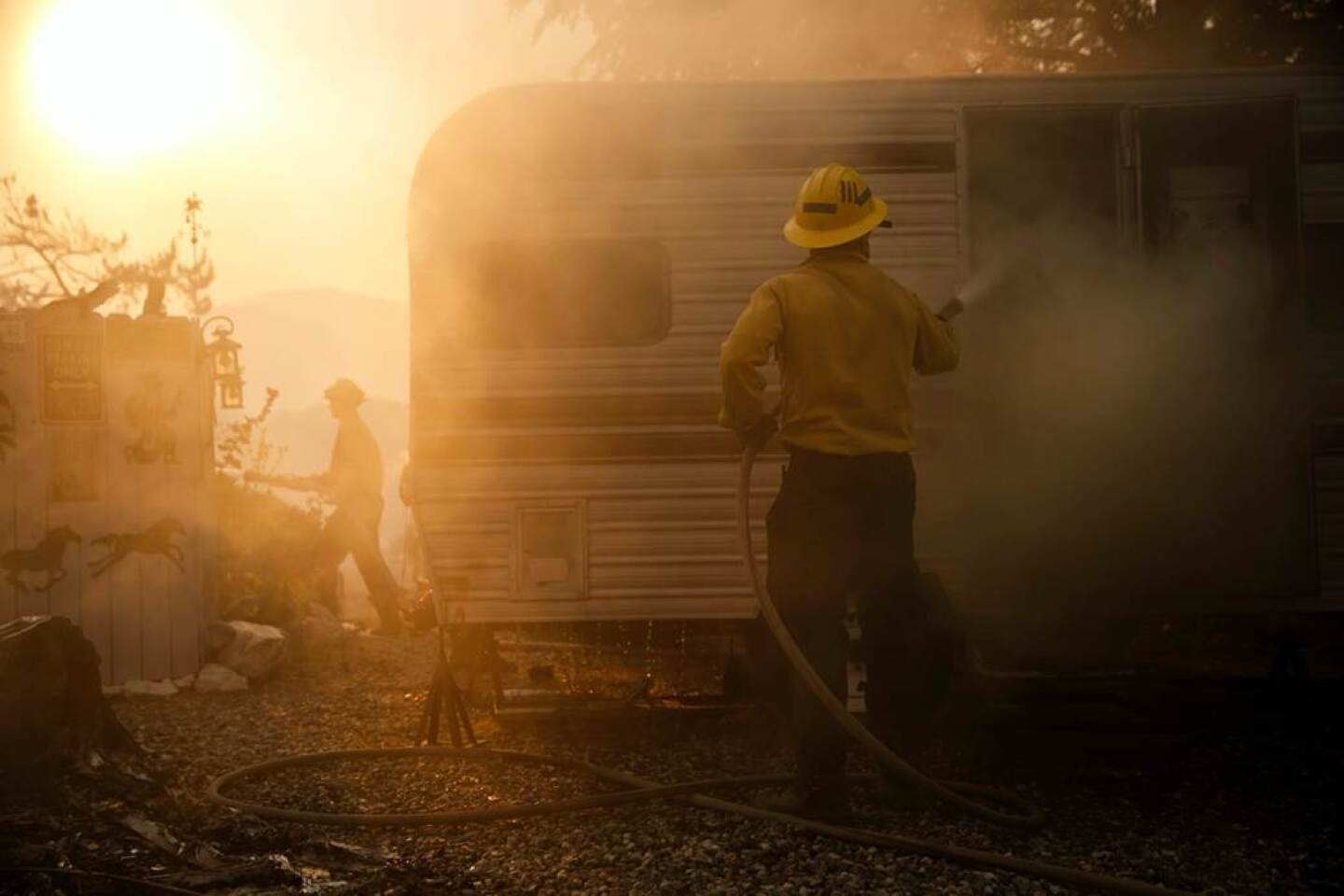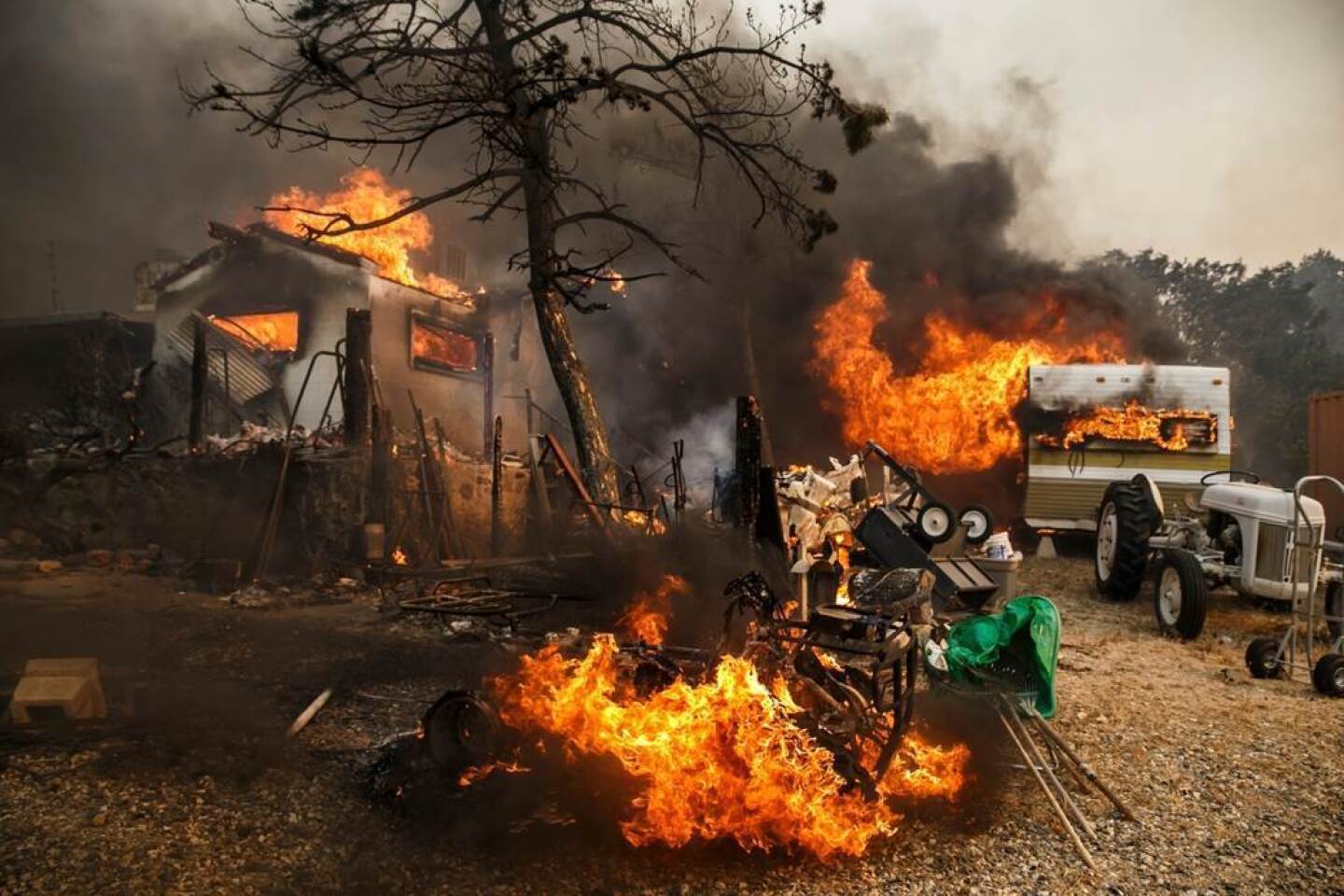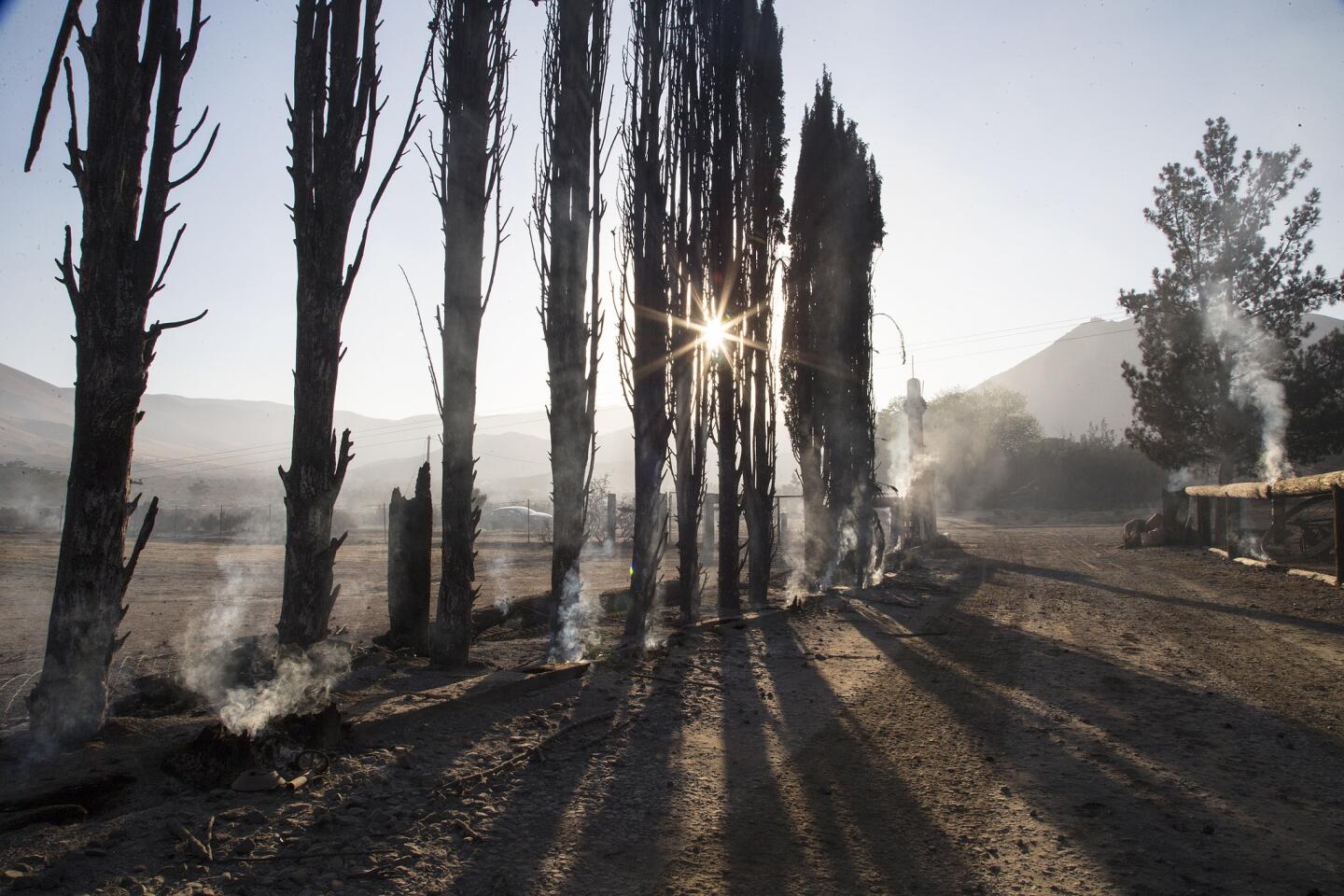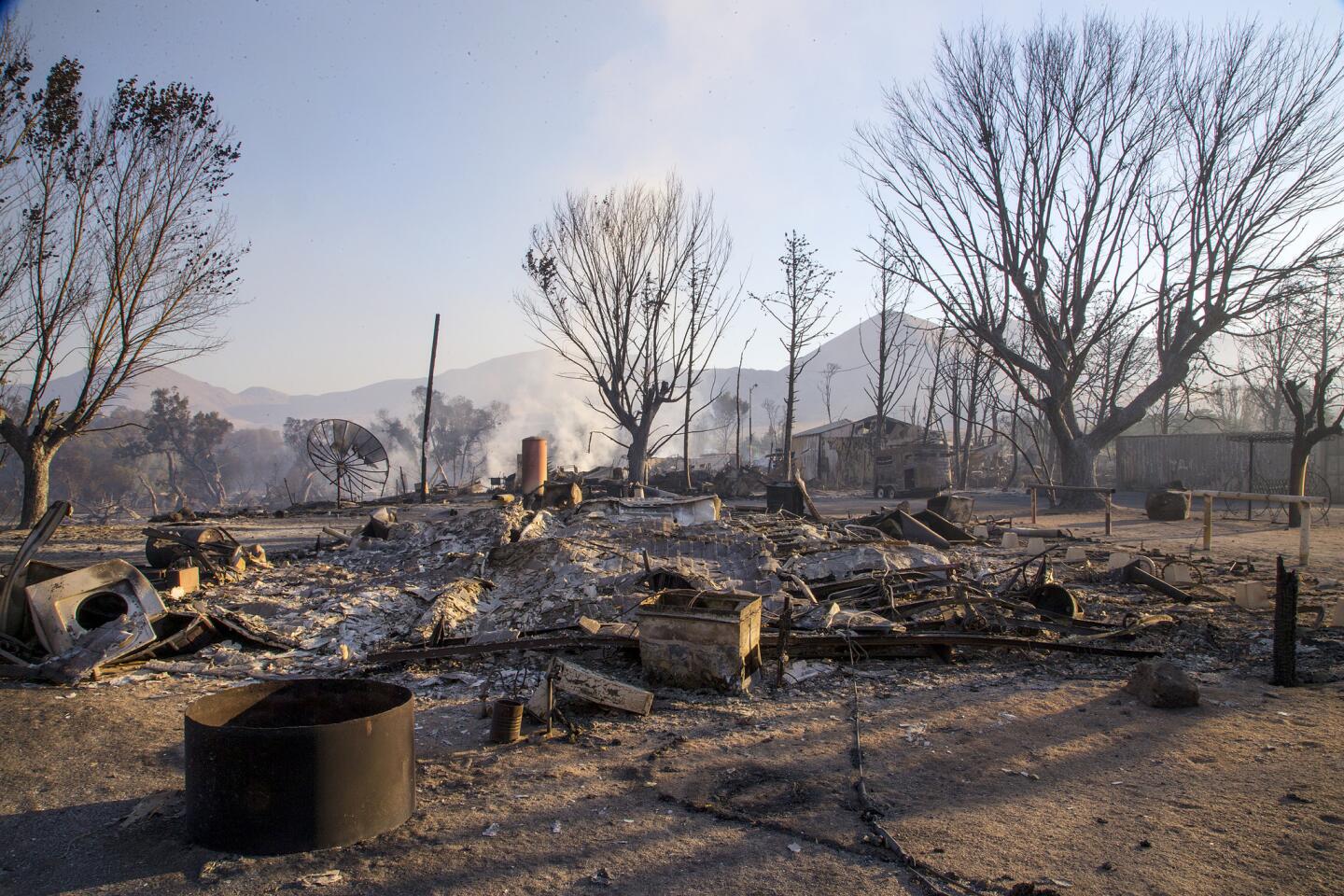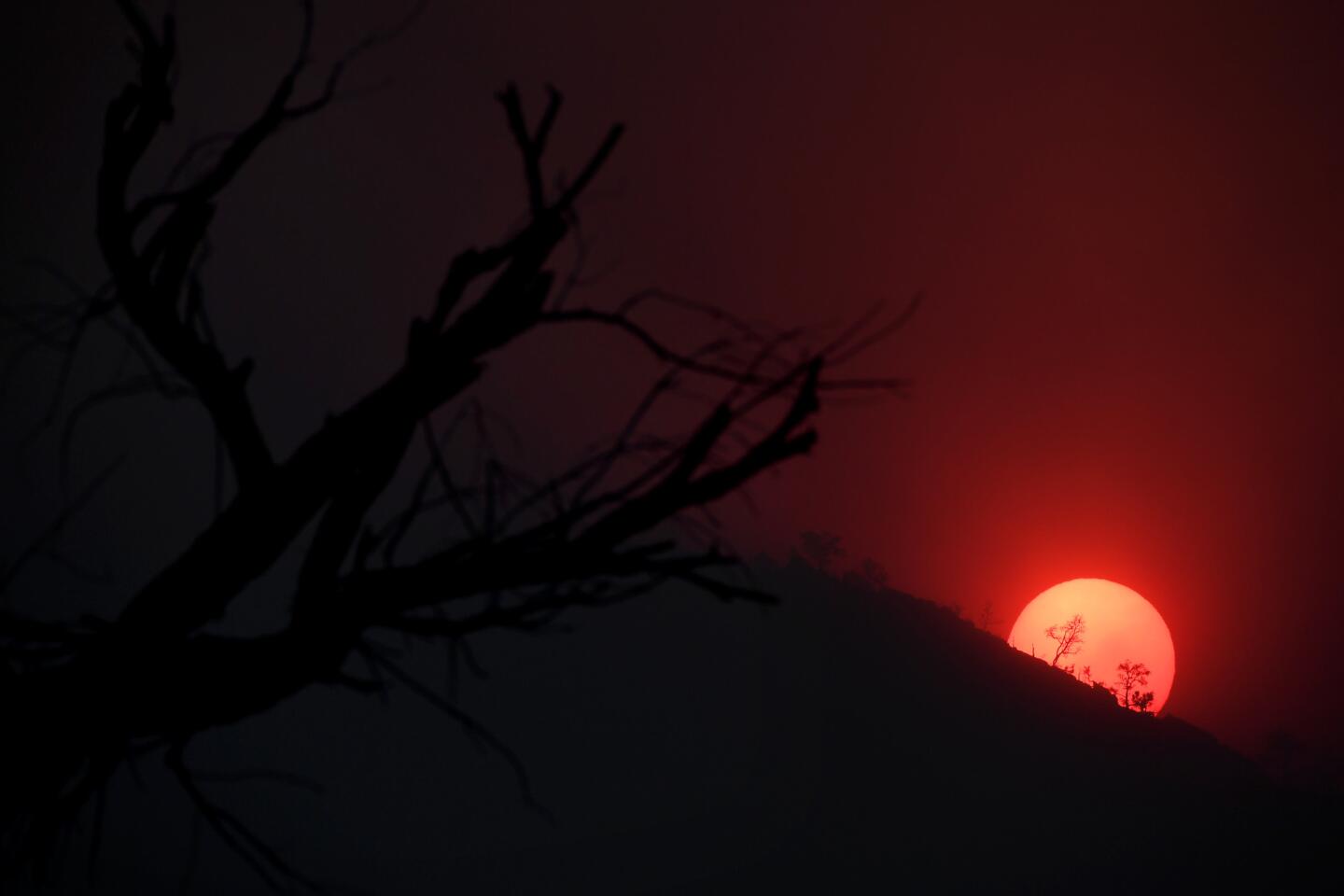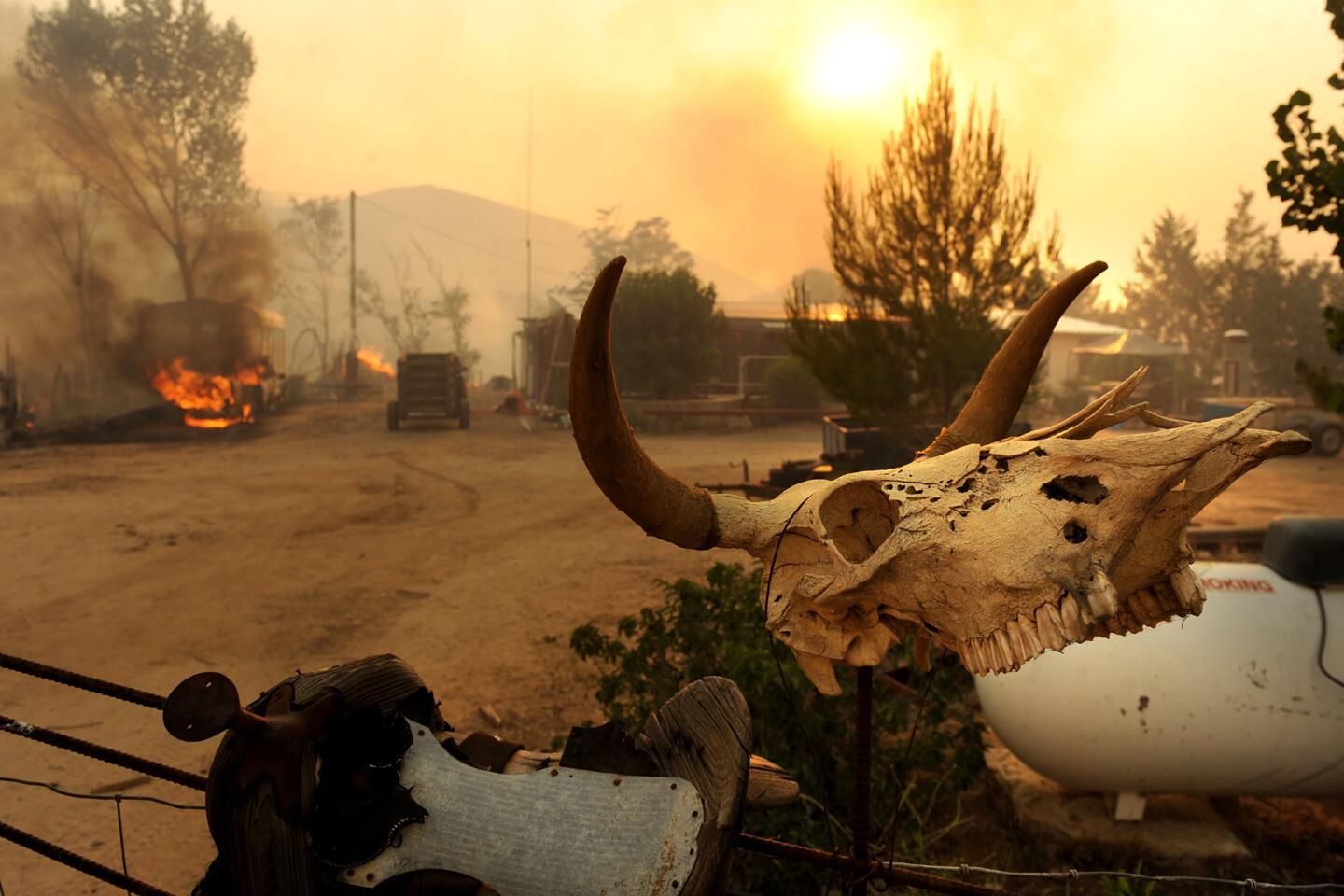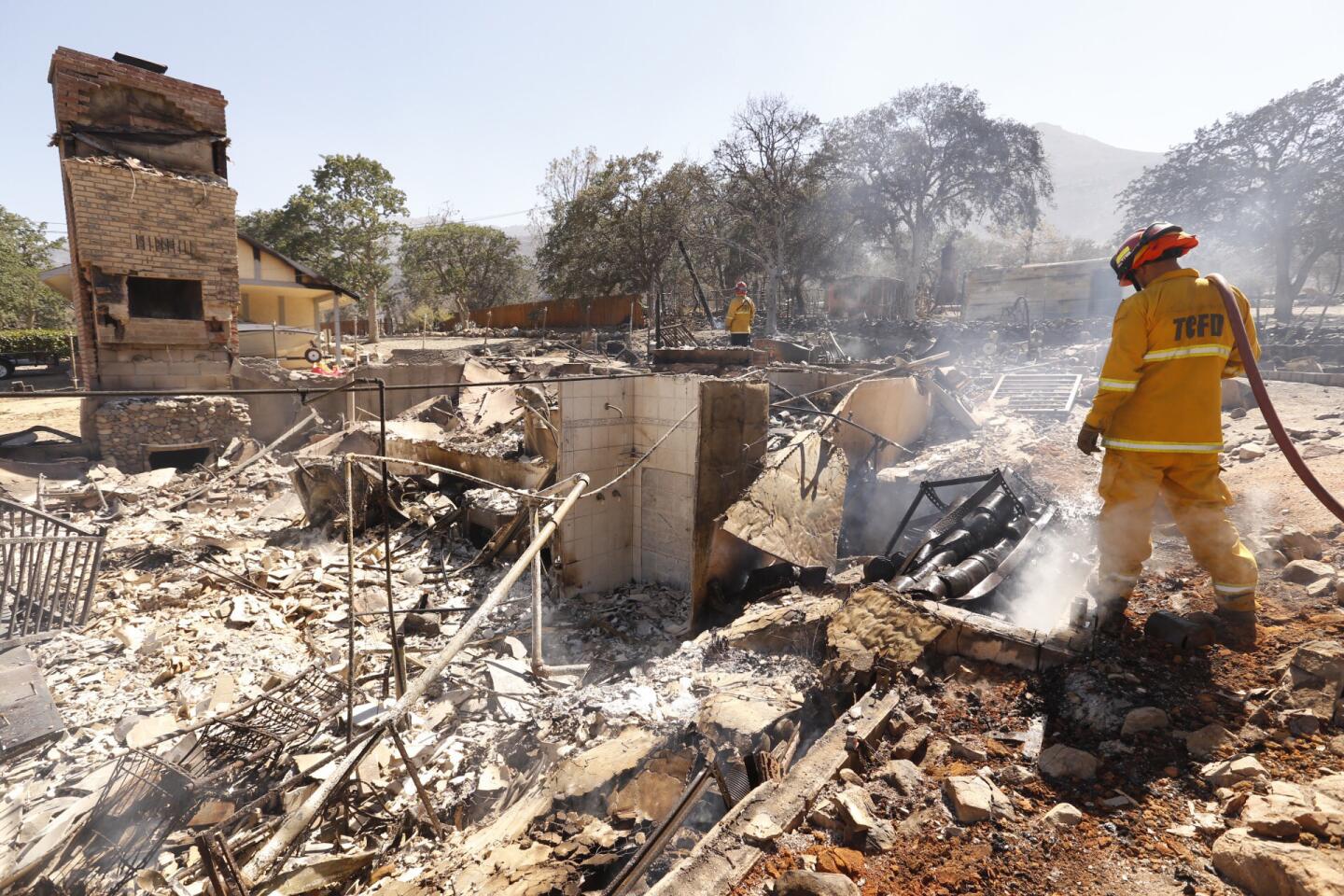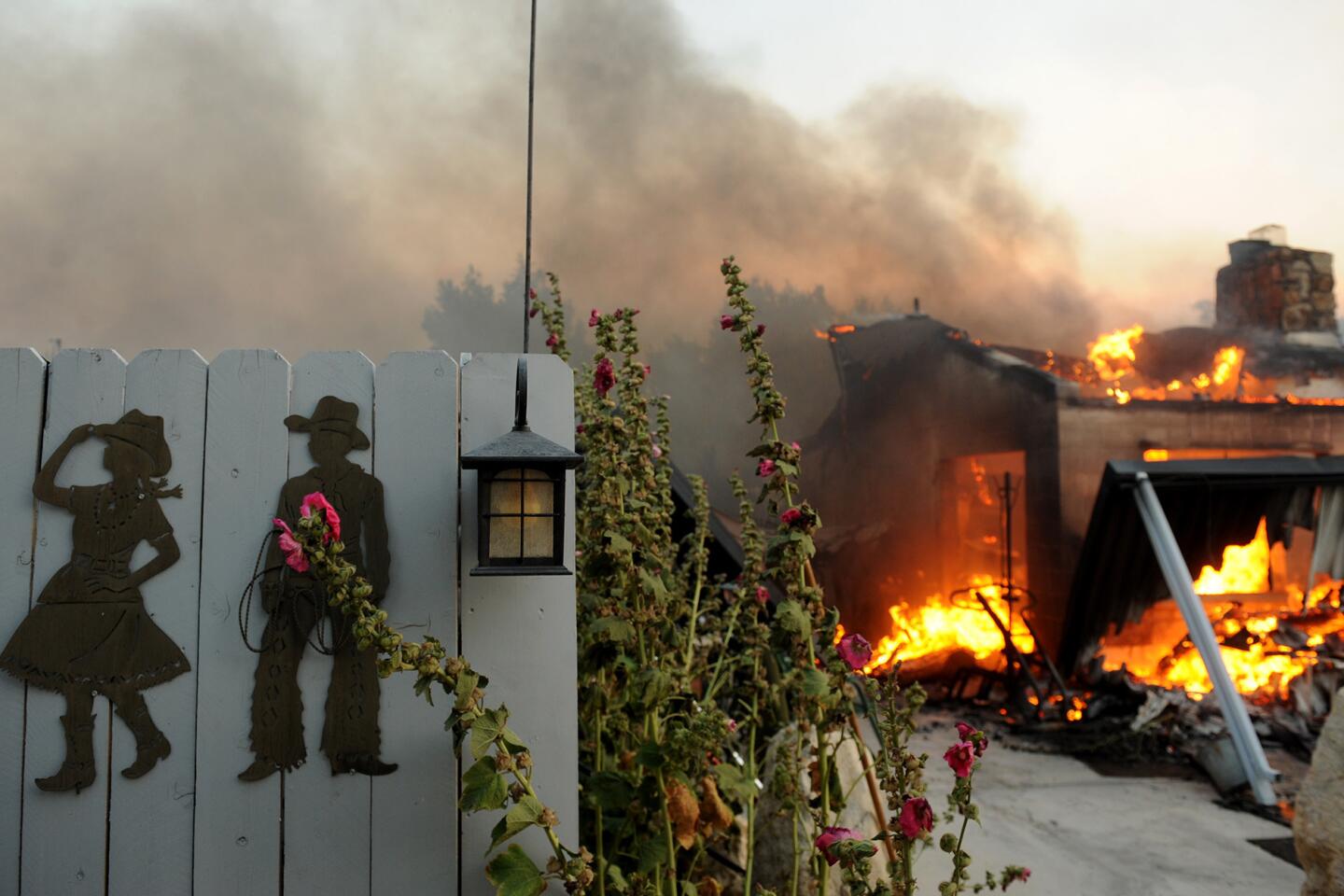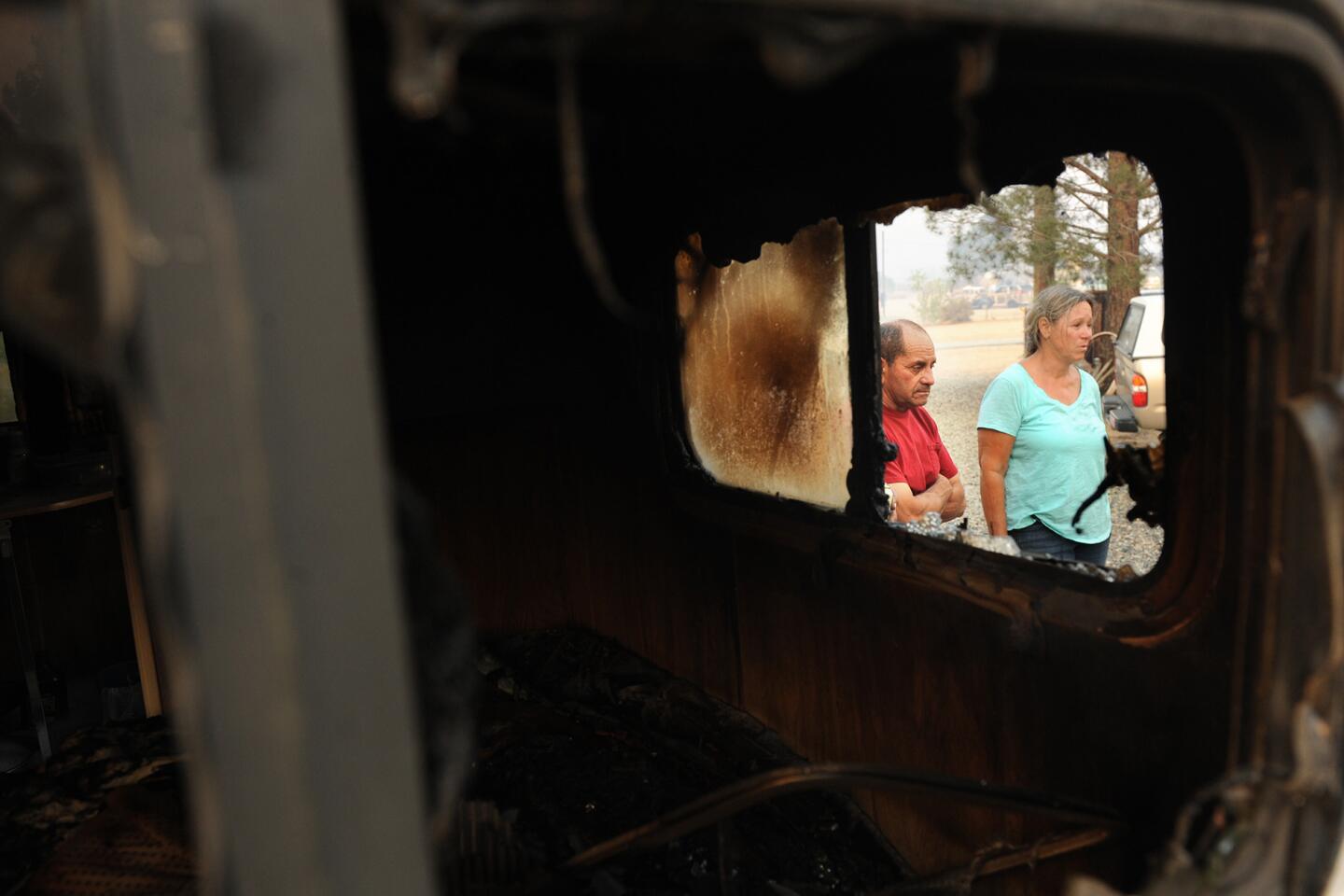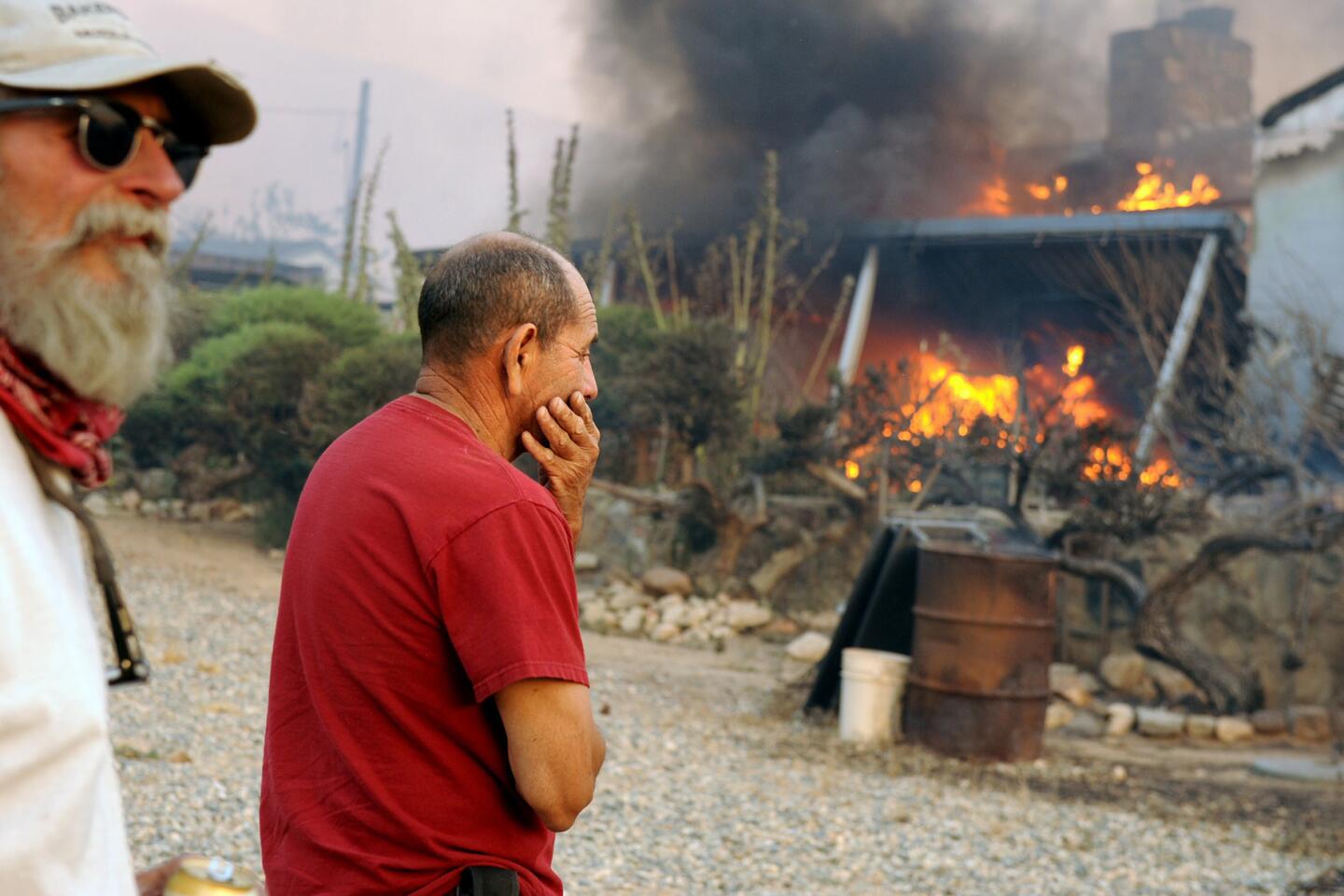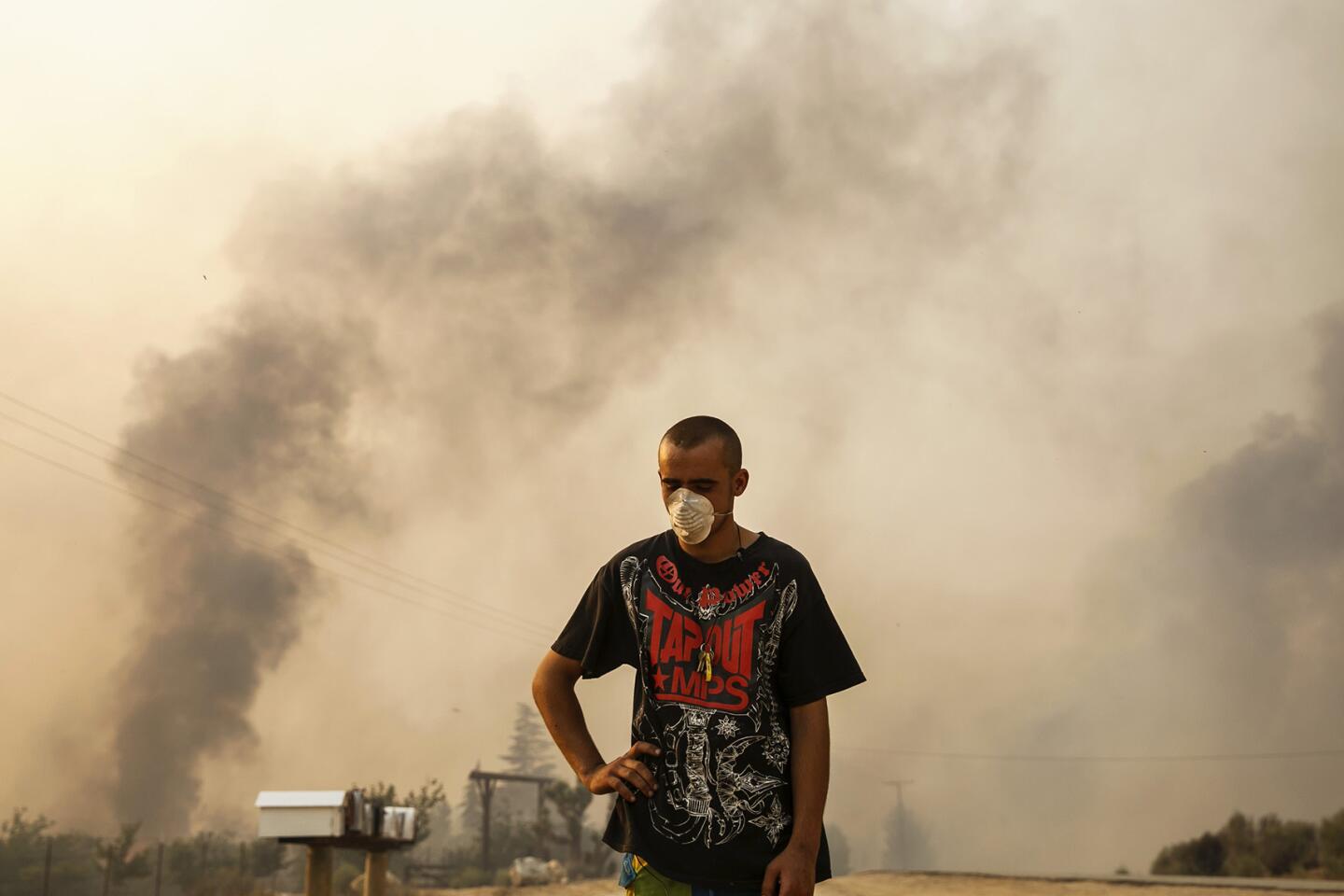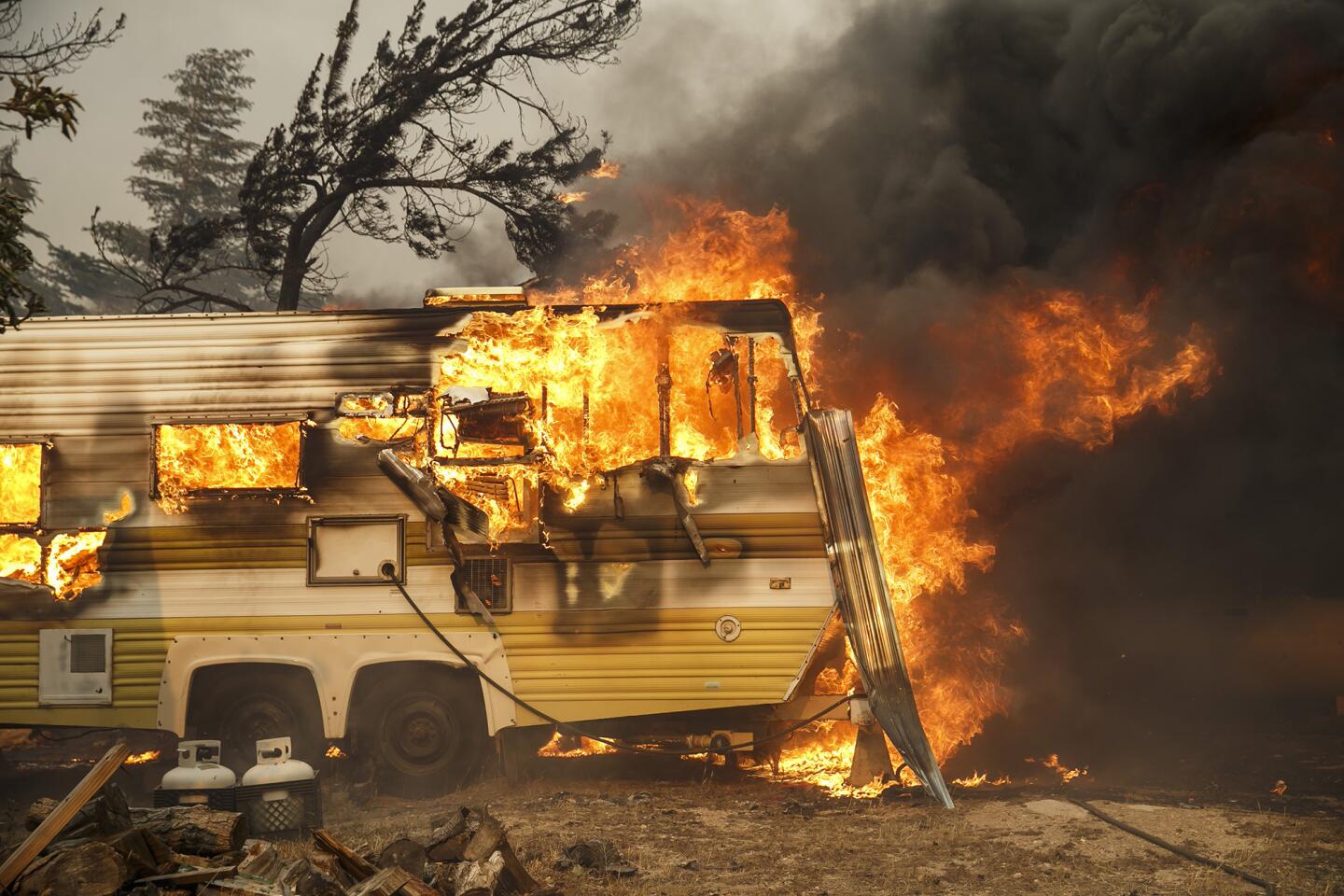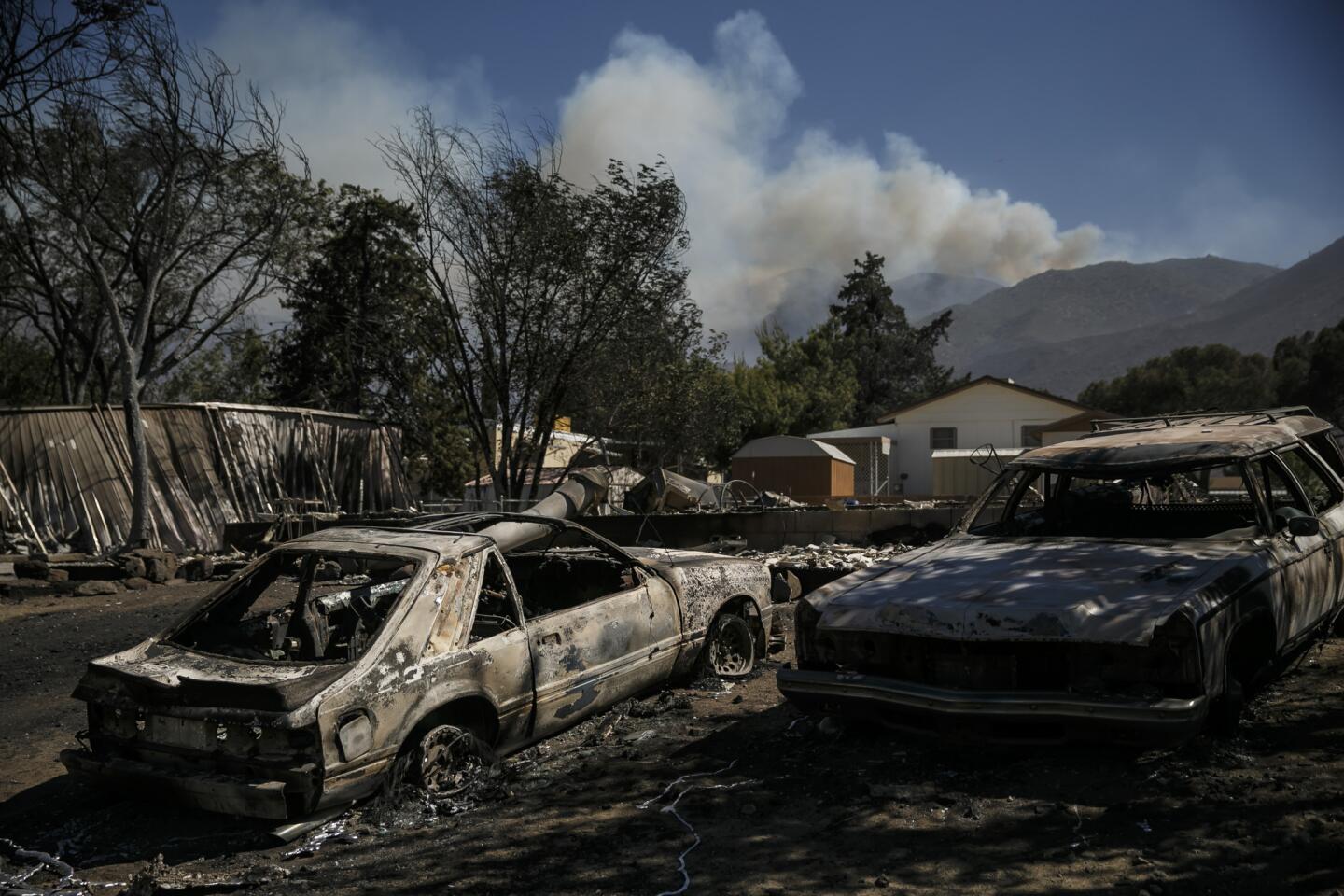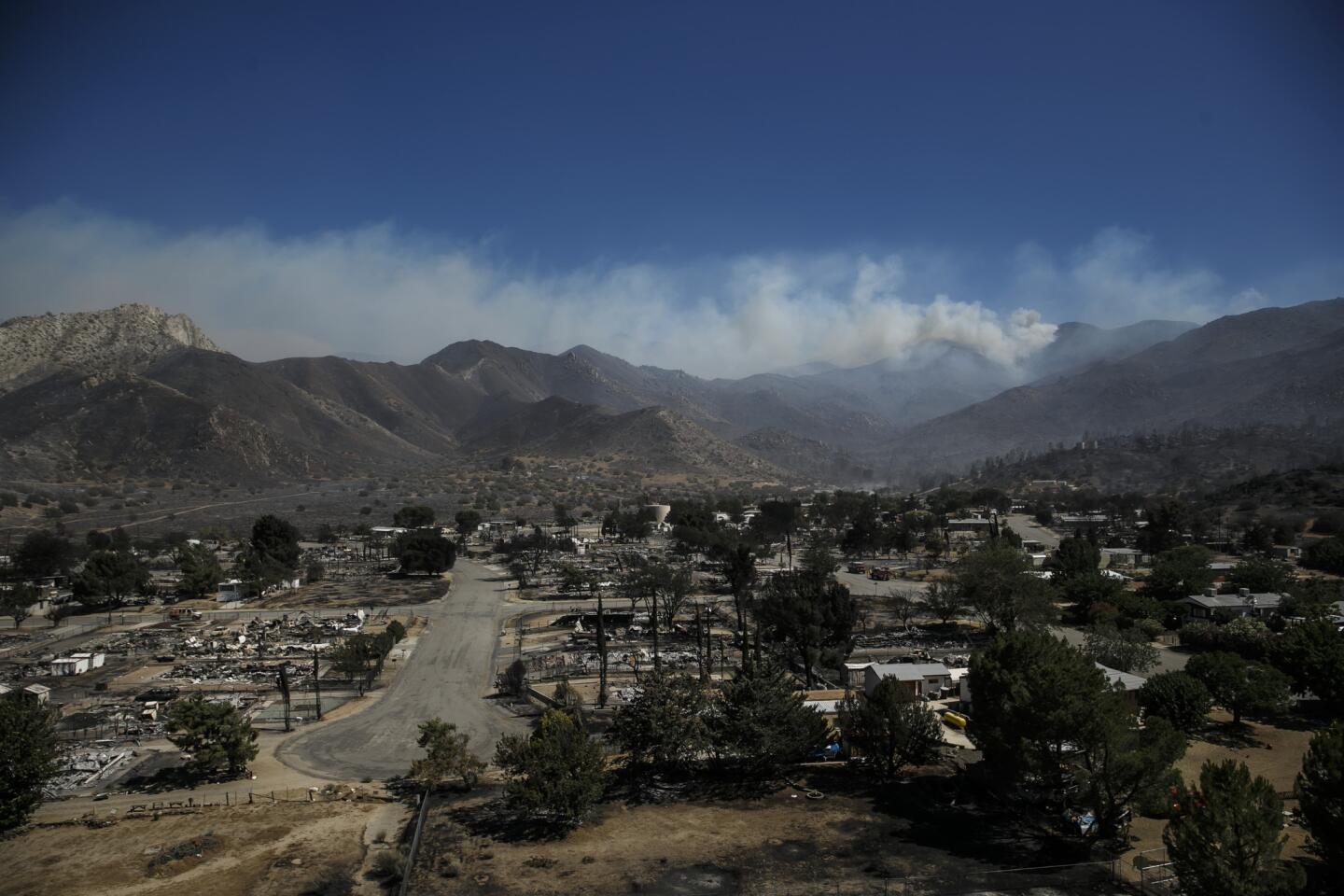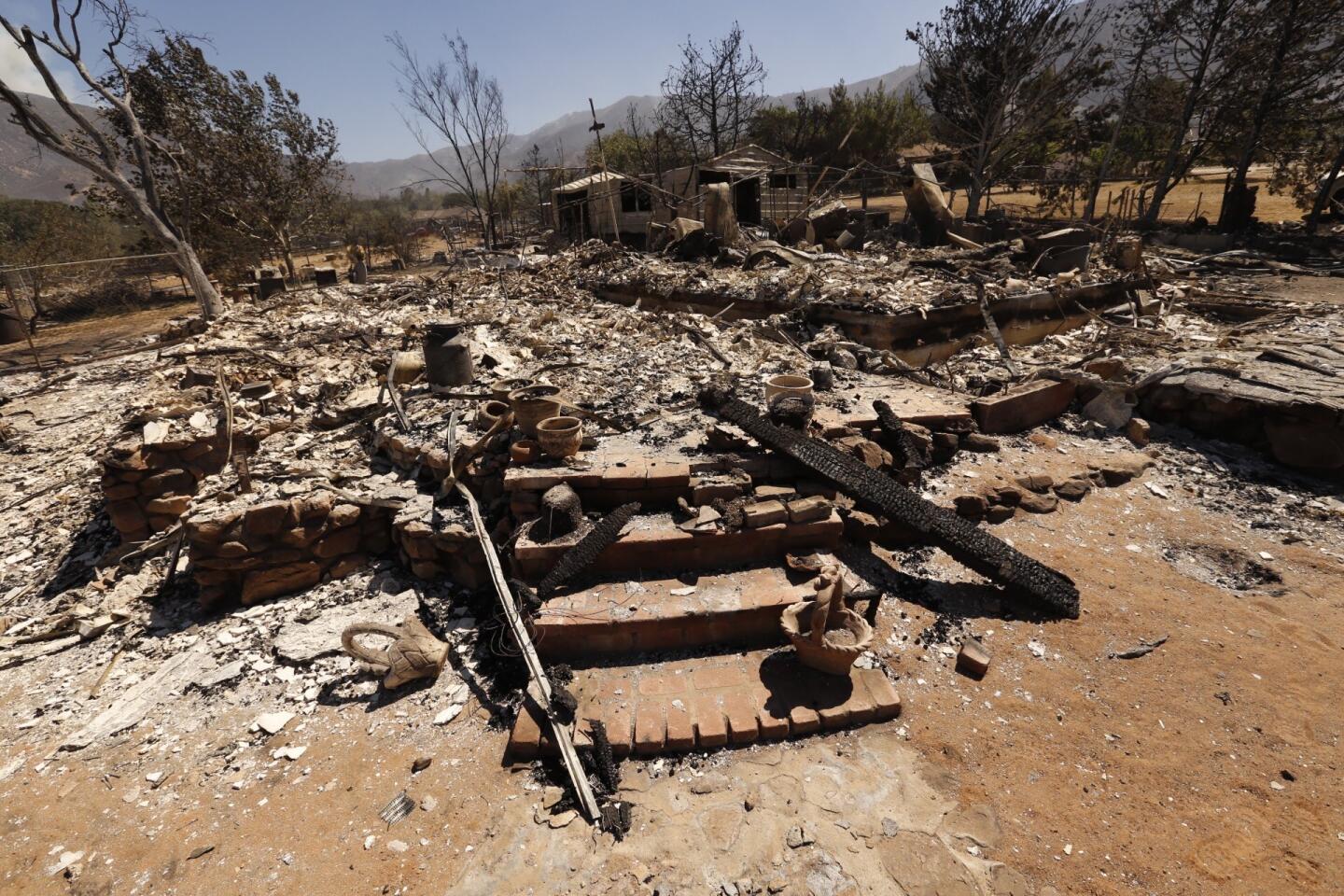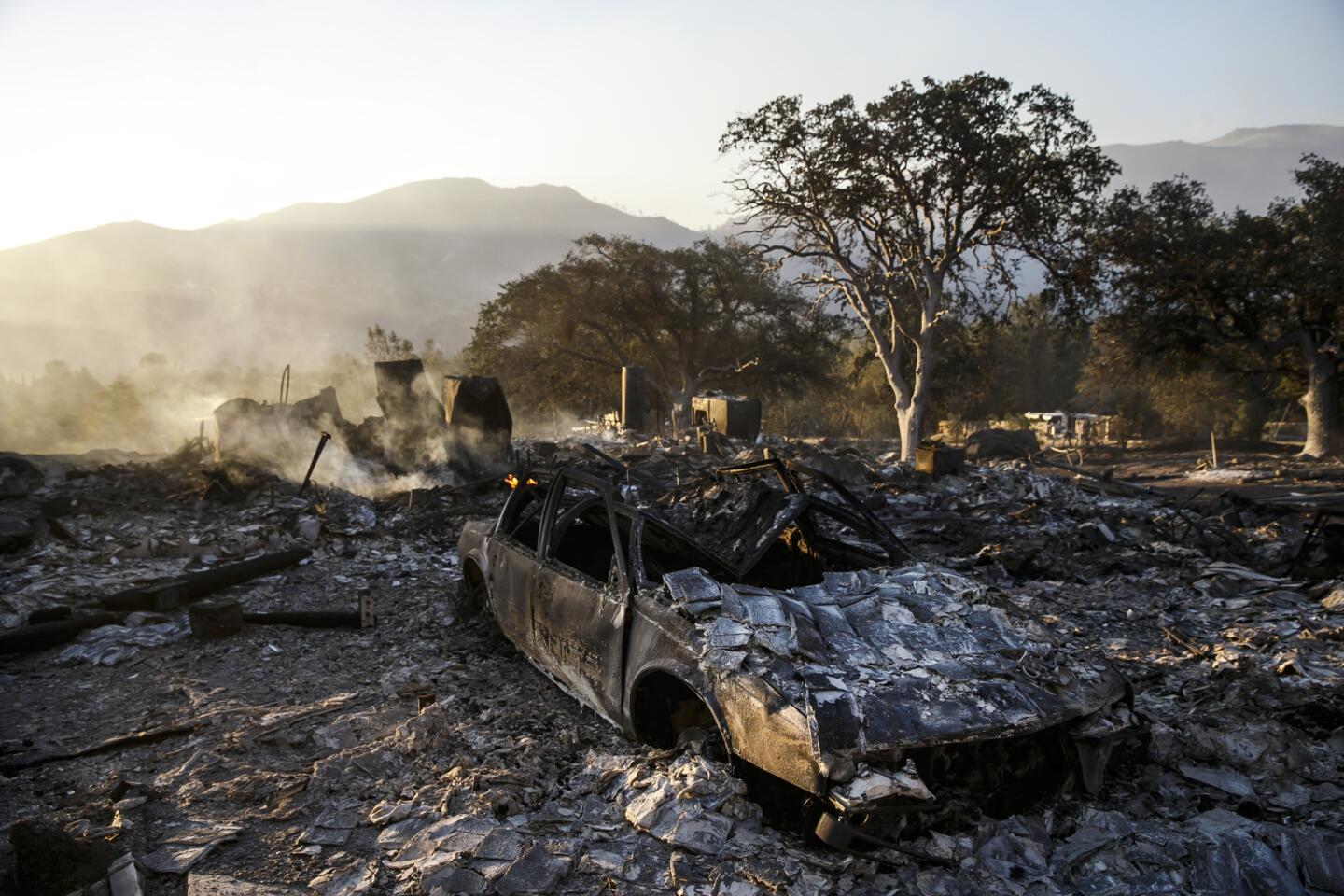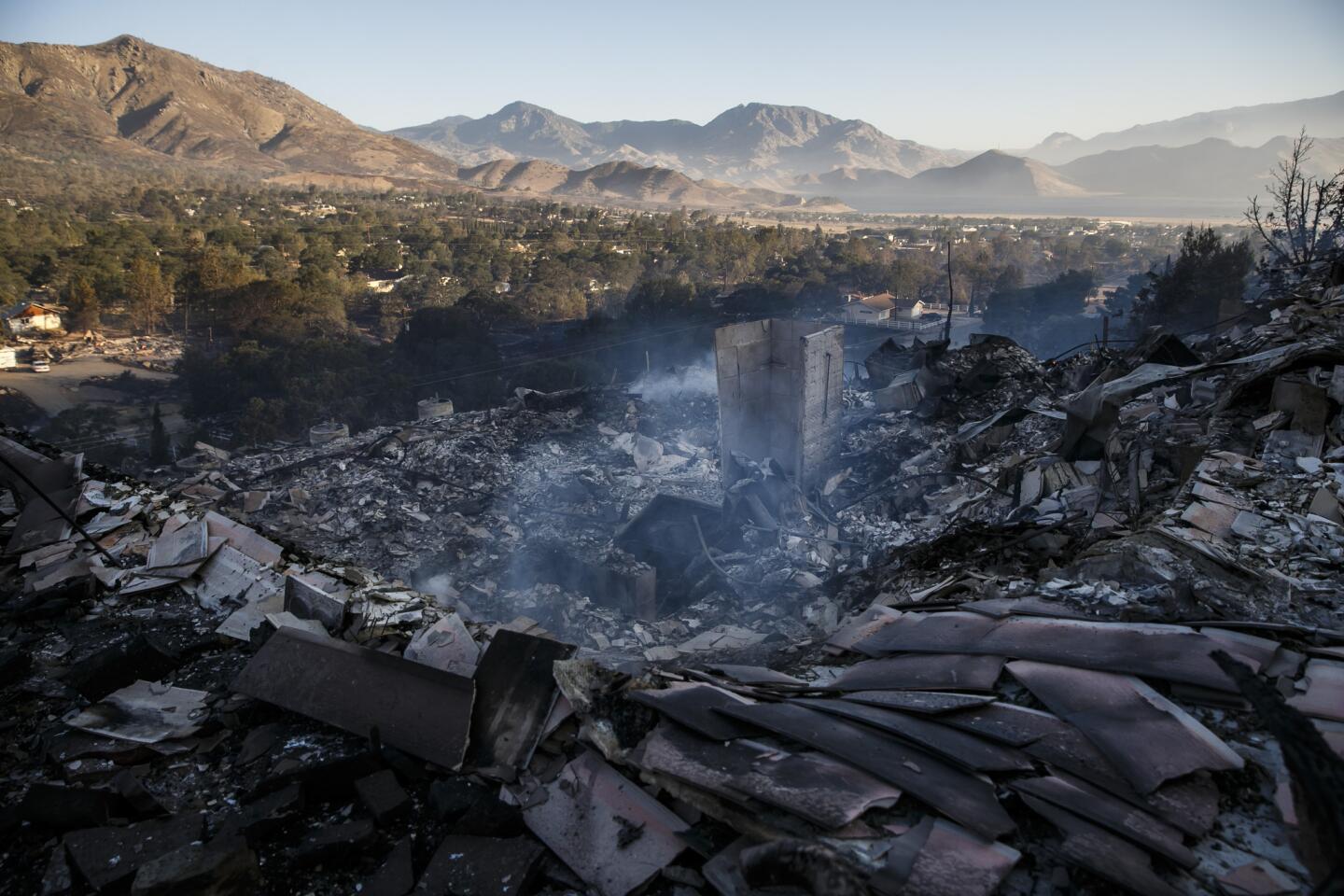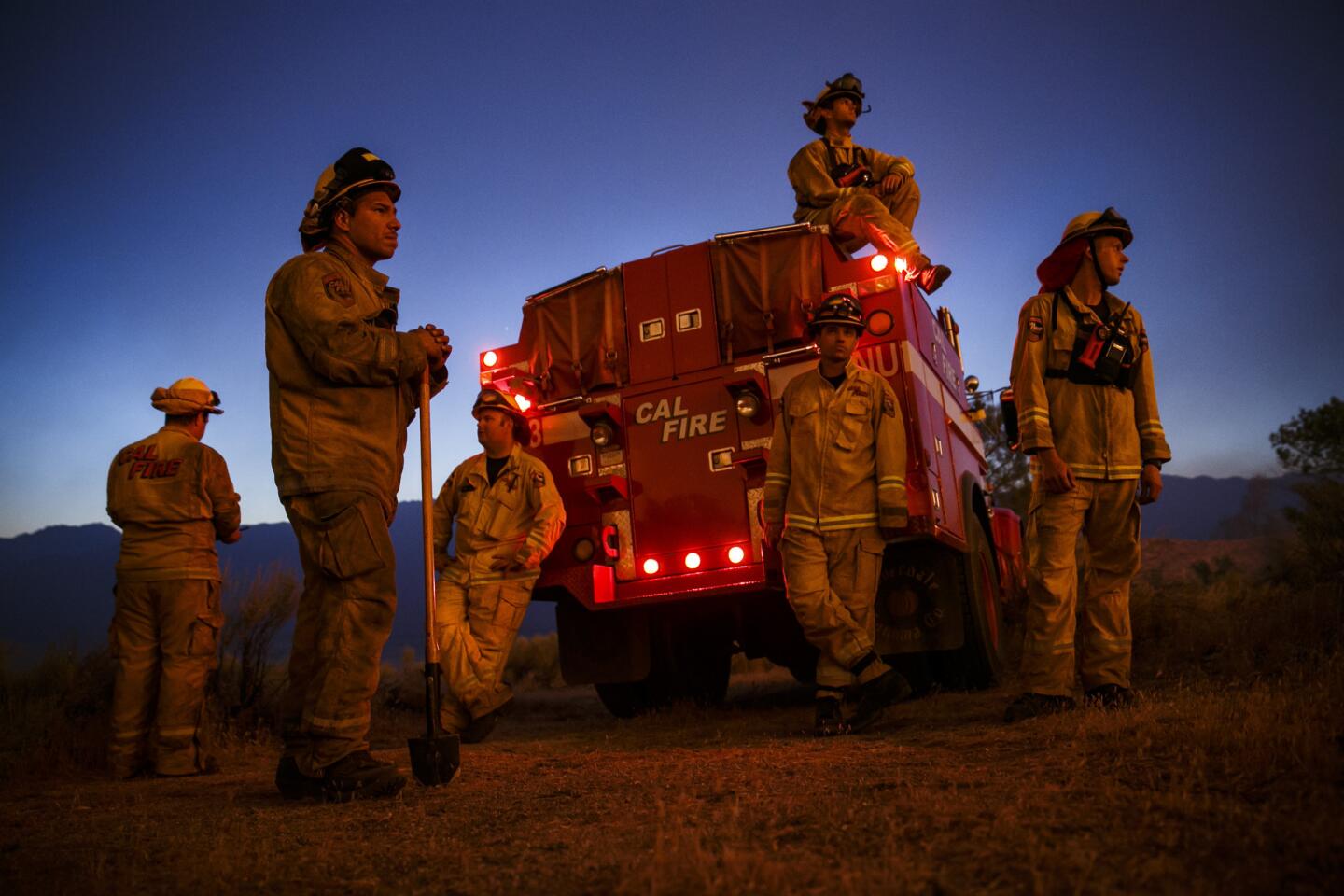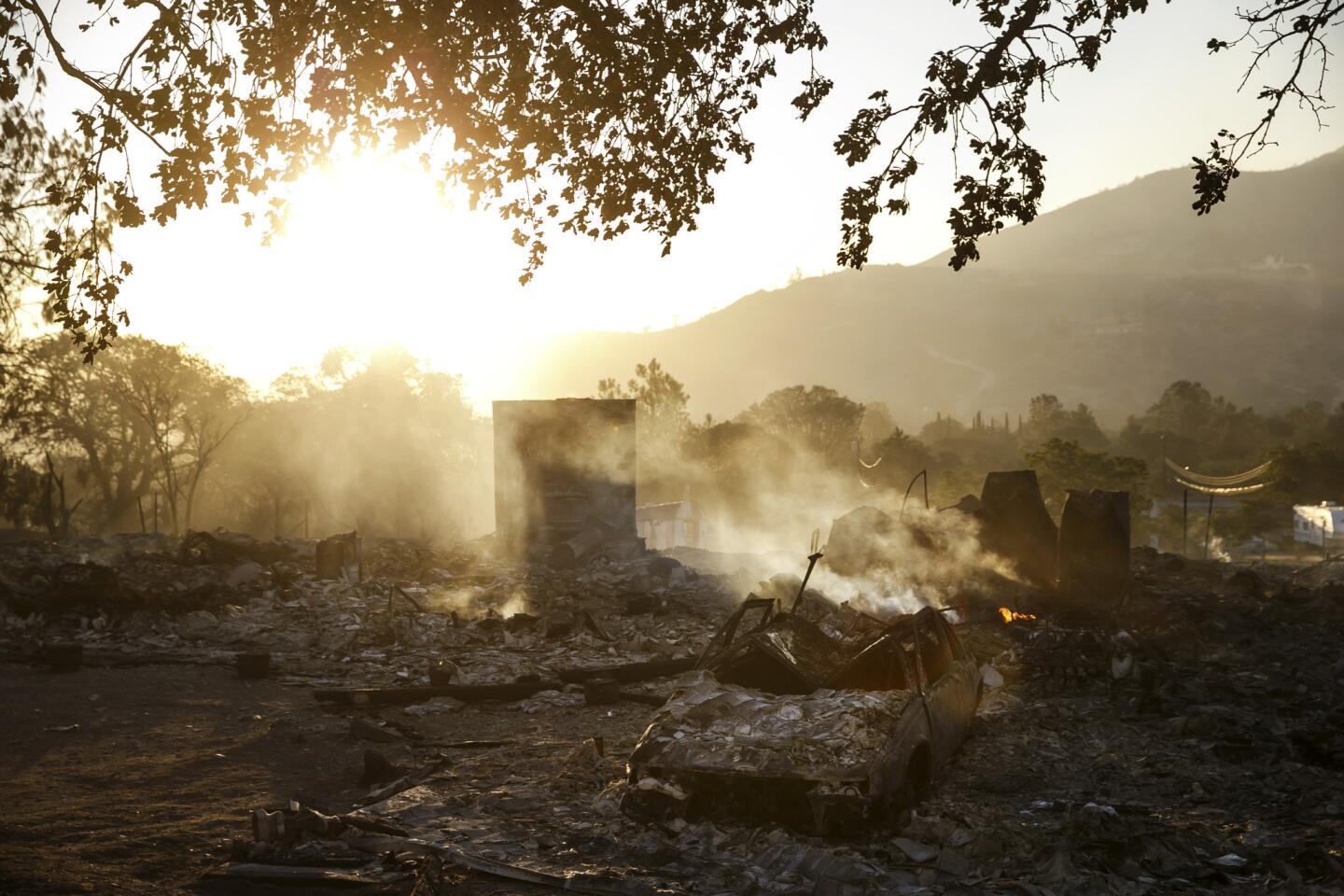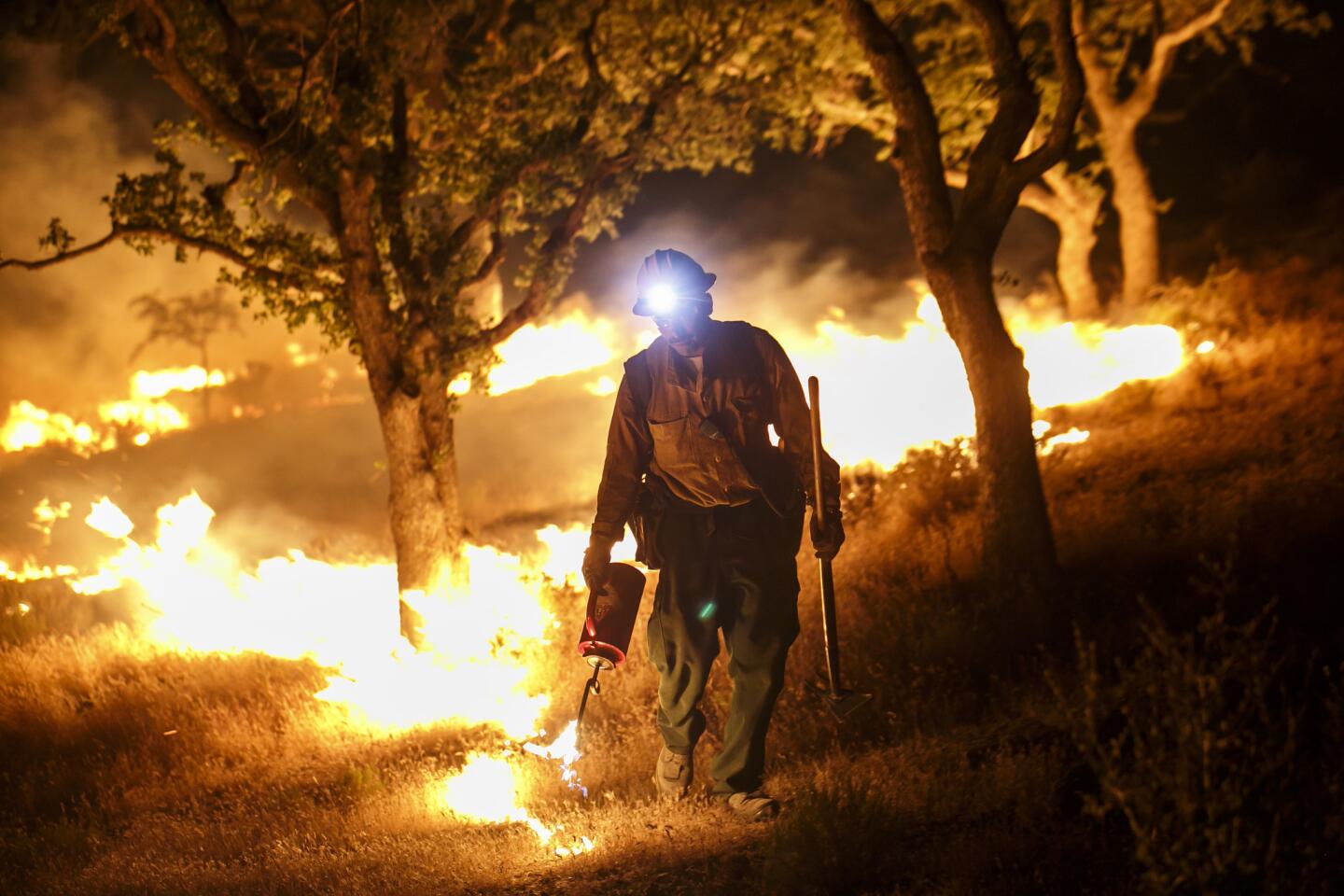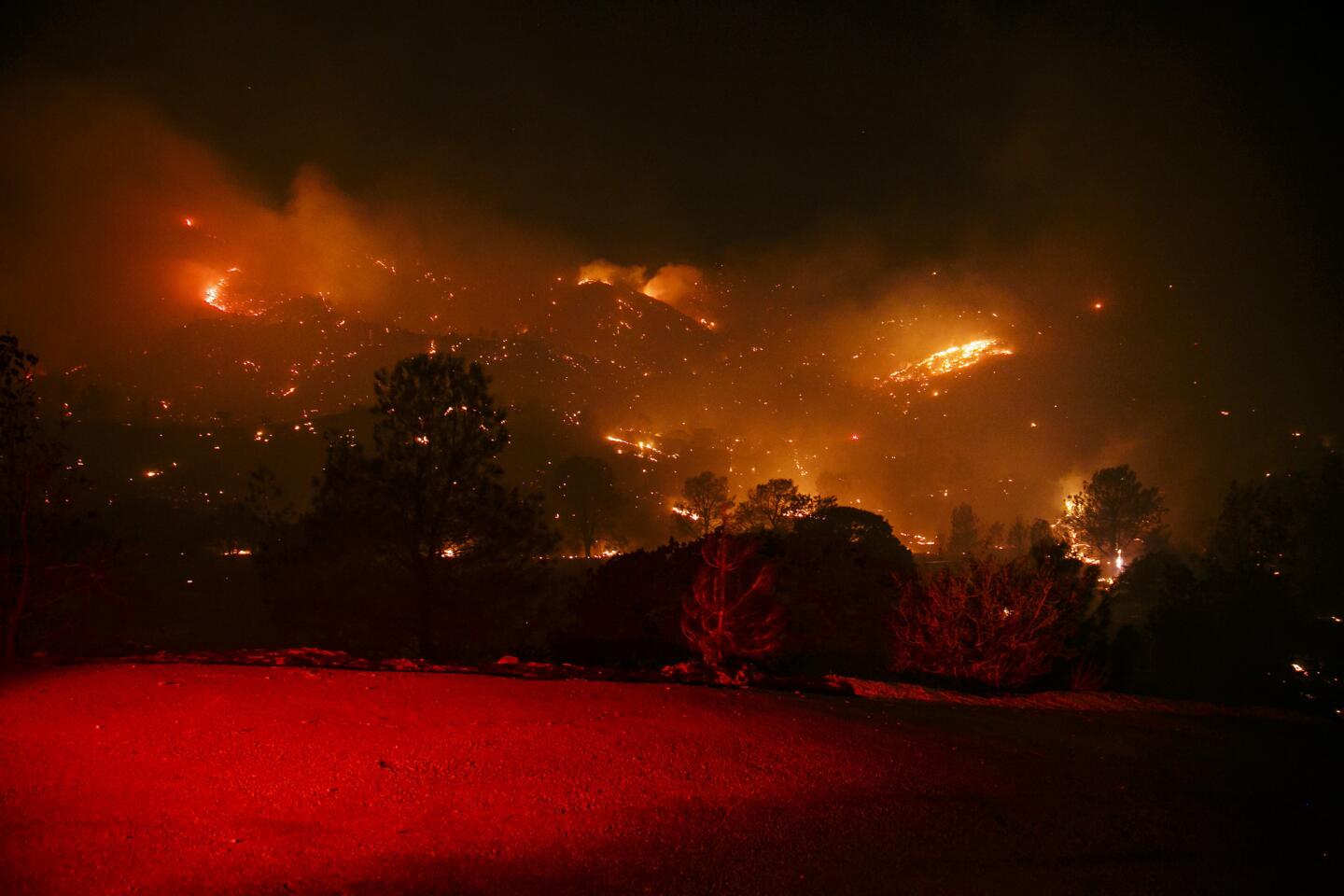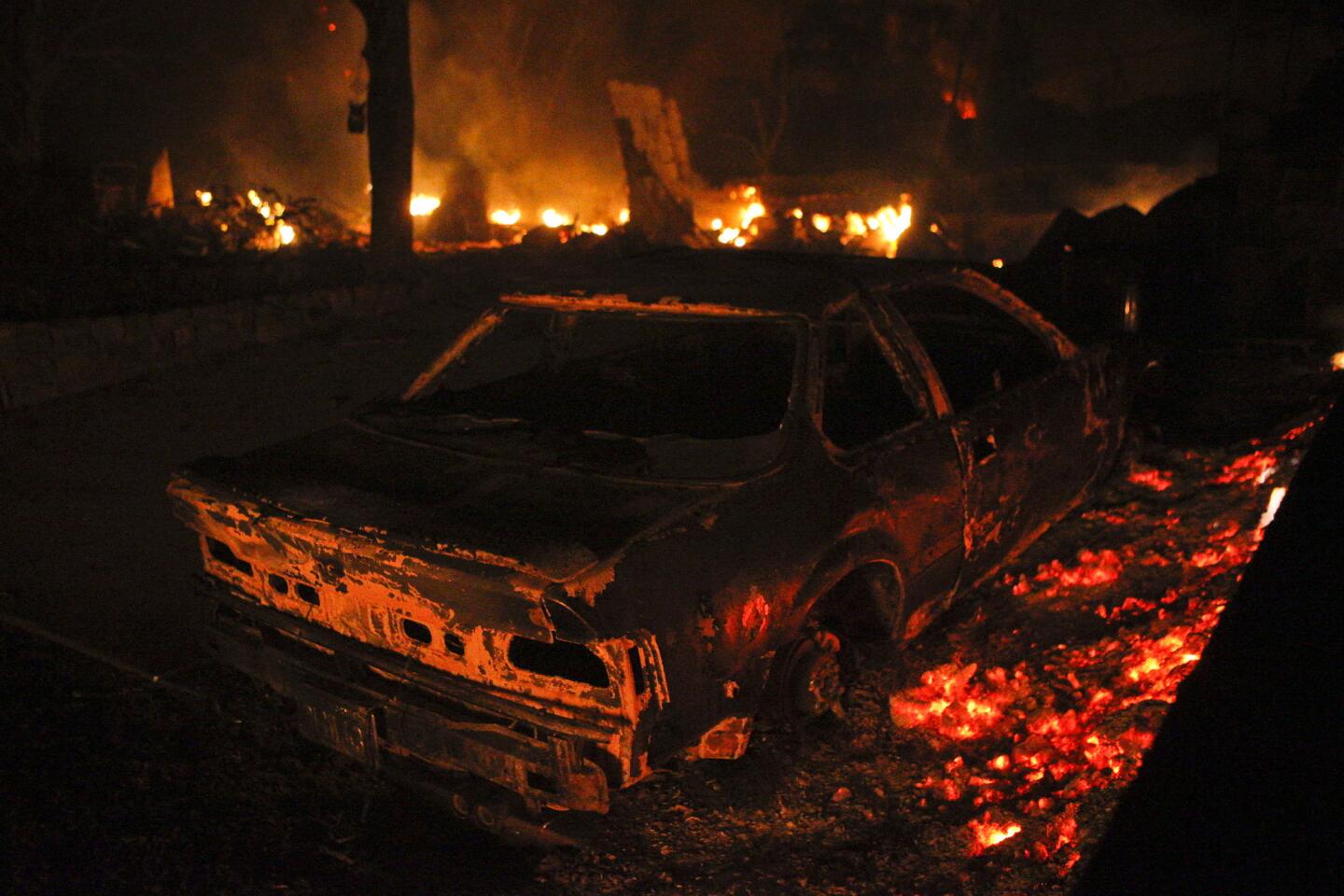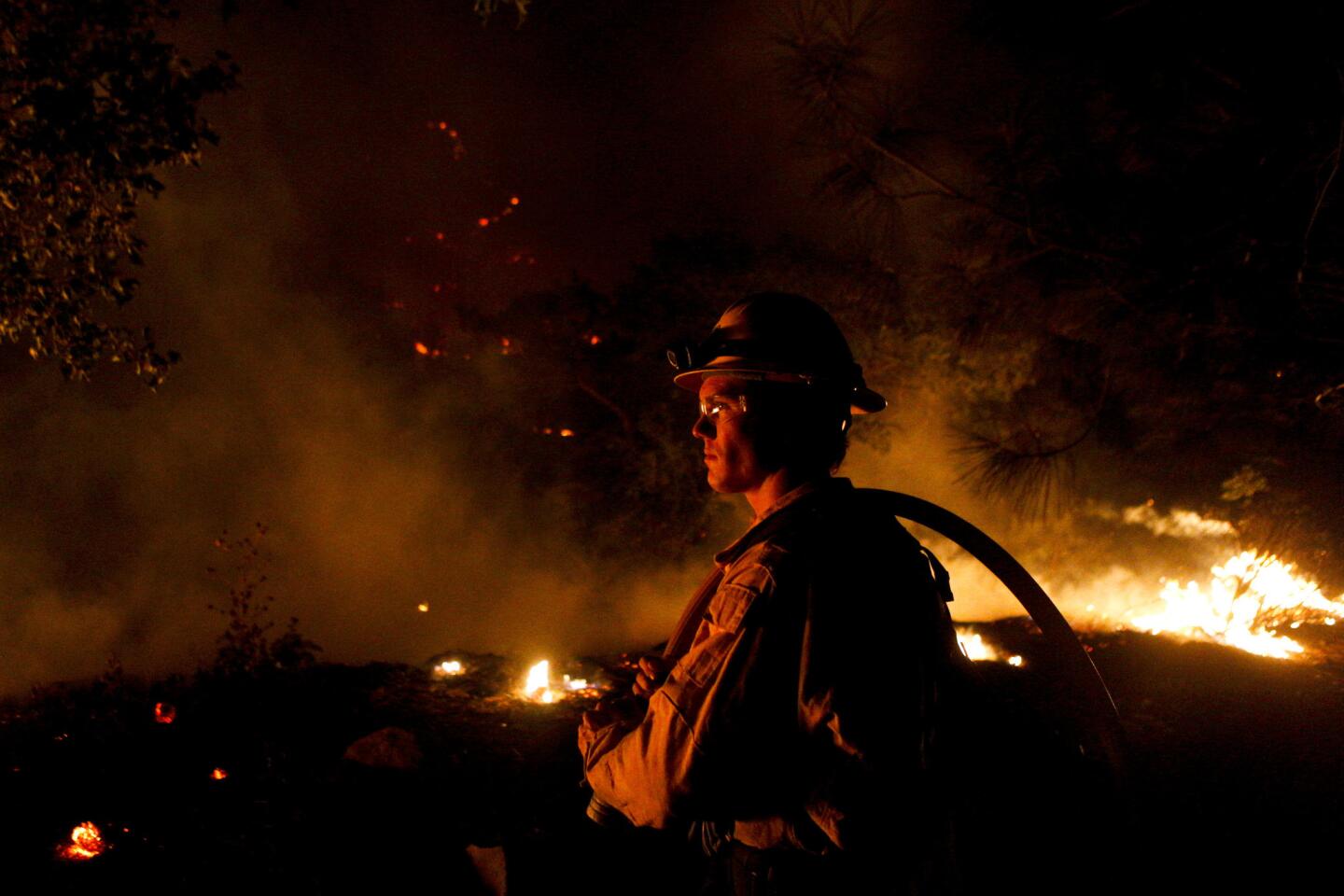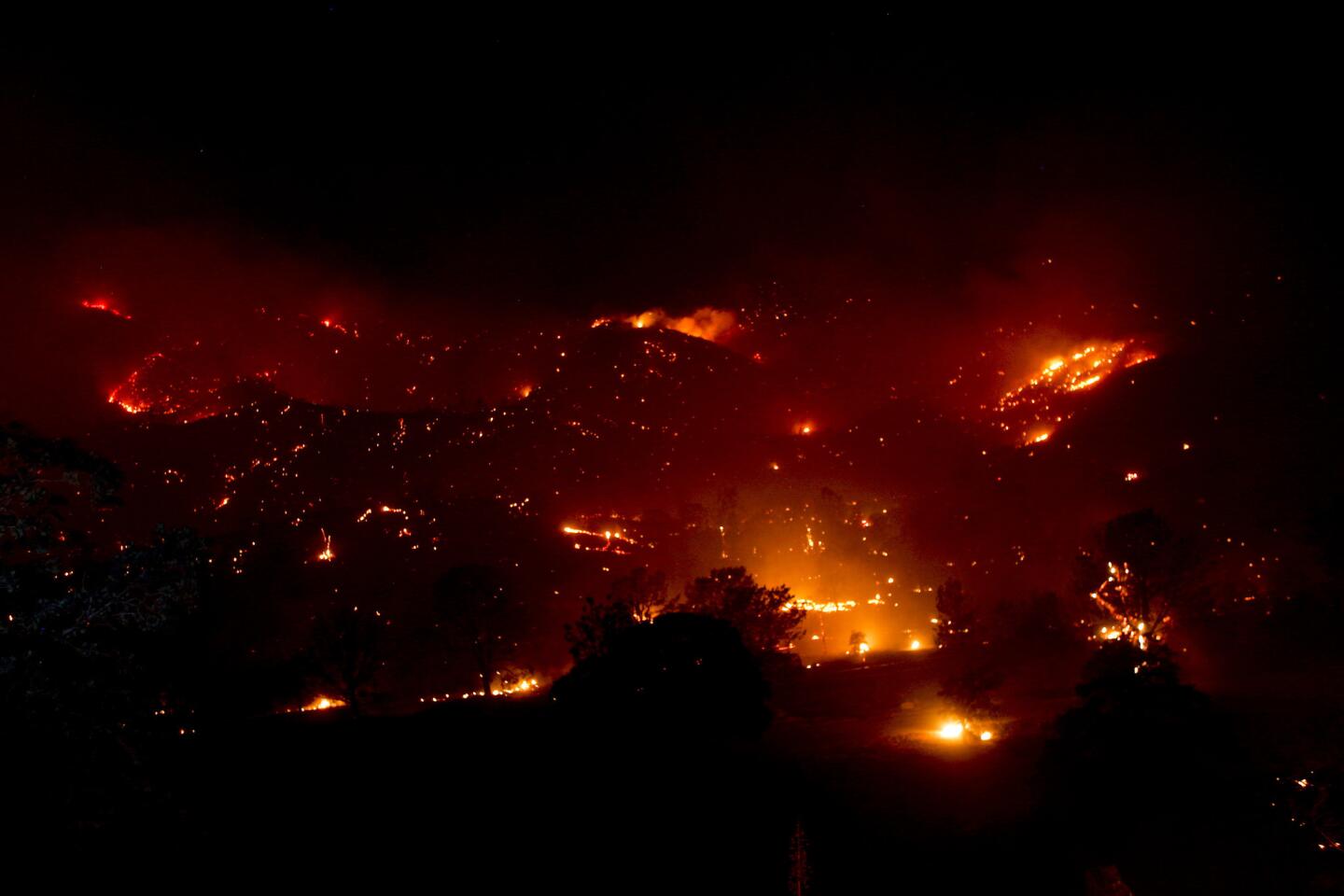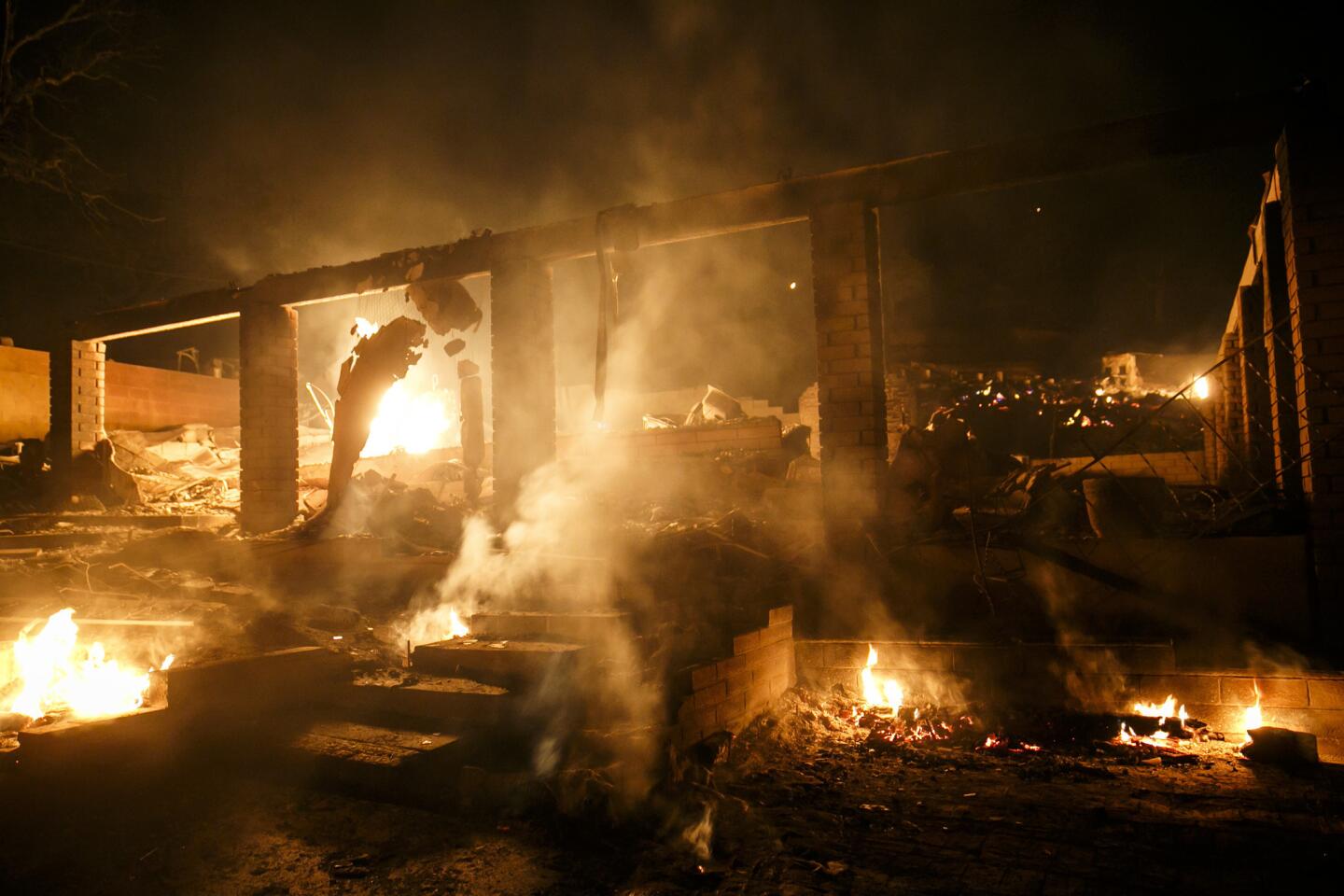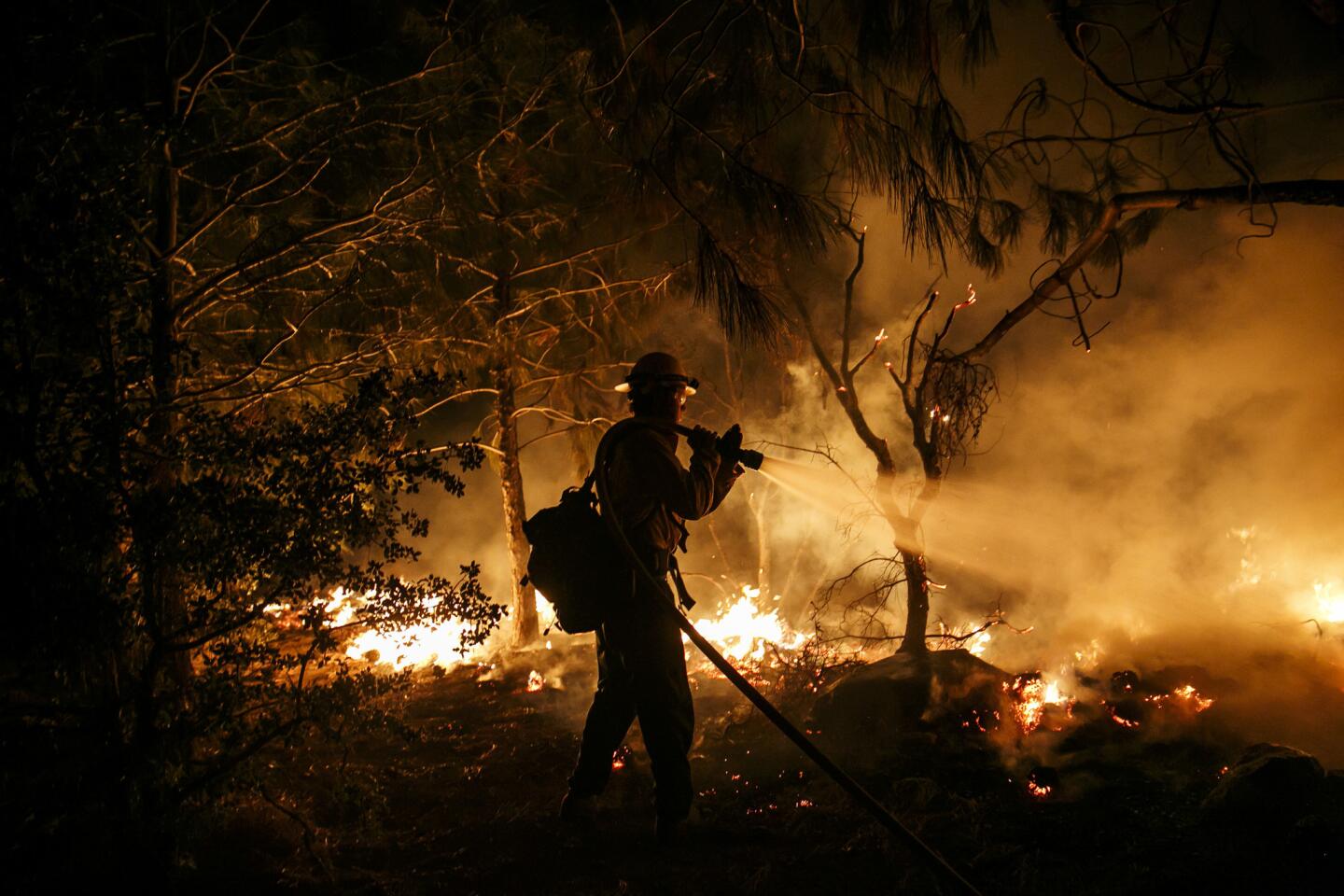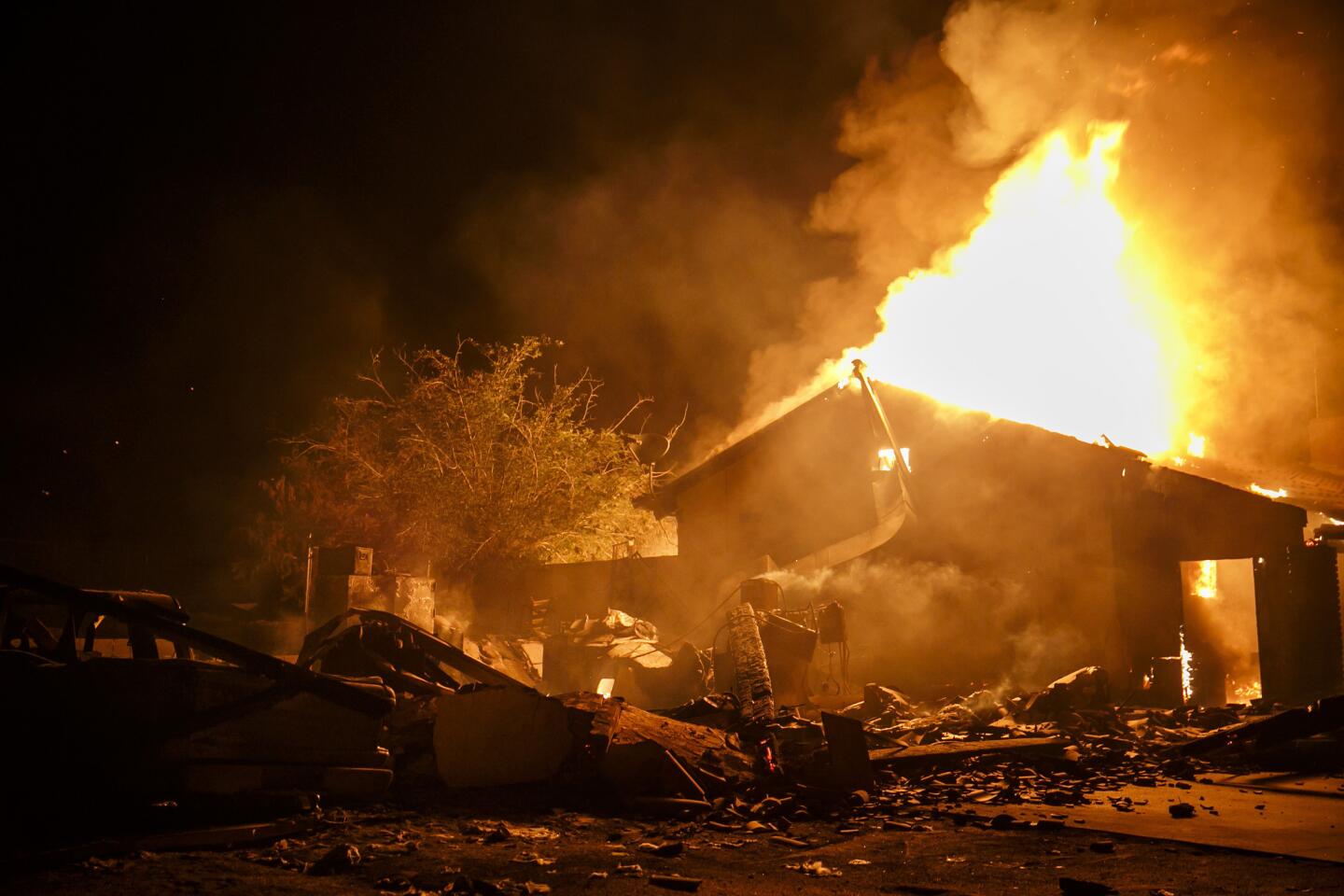Kern County’s destructive wildfire was driven by 50- to 60-mph winds and fed by dry grass
As David Brinsfield headed up to a wildfire that had just been reported on the edge of Lake Isabella late Thursday afternoon, he listened to the radio chatter.
“I hear two acres. Then within 20 minutes or less, it’s 200 acres,” said Brinsfield, a federal fire management officer. “Something’s wrong,” he thought. He turned around and headed back to his Bakersfield office to check wind data and call the Kern County Fire Department.
Driven by unusually strong winds and fed by dry grass that might as well have been an endless bed of matches, the Erskine fire ballooned to nearly 20,000 acres Thursday night, outrunning firefighters and destroying scores of buildings.
The blaze – the cause is under investigation – started at the edge of Lake Isabella on U.S. Bureau of Land Management acreage at about 4 p.m. Within minutes it was racing to the top of 5,405-foot Cook Peak and then galloped east with 25-mph winds that gusted to 50 and 60 mph.
Into Lynch, Goat Ranch and Long canyons it sped, turning the hillsides the color of blackened steaks. Embers and sparks flew from the slopes into the small communities of Squirrel Mountain Valley, Mountain Mesa and South Lake, landing randomly on modest ranch houses and vacant lots.

Firefighters continue to battle the deadly Erskine fire, which has burned in a random pattern, razing some neighborhoods and leaving others nearby untouched.
Firefighters from state, federal and local agencies streamed up Kern River Canyon on Highway 178, joining the crew of 100 from area fire stations that launched the initial attack.
The wind was flinging embers a quarter-mile ahead of the flame fronts, studding the night-darkened mountains with hundreds of small fires. “It looked like a small city. There were lights everywhere,” said Gabe Garcia, a BLM field manager.
Firefighting crews focused on evacuating residents and defending houses. But the flames had taken down utility poles, sending live wires sprawling across Highway 178 and making the main route into the burn area impassable for a time Thursday night. After the power went out, the fire hydrants wouldn’t pump. Crews had to go to the lake to fill water trucks.
“That was a huge problem,” said Brinsfield, a BLM deputy district fire management officer who reached the fire scene before nightfall.
But the biggest problem was the fire’s speed. “It was just moving so fast,” he said.
The wind-driven flames gorged on dry grass, much of it an invasive, short-lived annual called red brome that every year spreads a caramel-colored carpet across the valley floor and up the mountain slopes. It is everywhere you look in the Isabella Lake area – in between sage bushes, under pines and oaks, creeping from the base of junipers.
The short grass, a native of the Mediterranean region, grows for a month or so during the rainy season. Then it dies, forming a bed of fuel that has upended the natural fire cycle in many of the driest parts of the West. Where there naturally should be dirt between shrubs – and thus nothing to burn – there are instead billions of easily ignited blades of brome.
Last winter’s rains promoted a new burst of growth, ensuring there was plenty for the Erskine to feast on. Drought has also killed trees and scrub, adding to the fuel.
There is a long fire history in the Kern River Valley. But usually the flames run to the top of Cook Peak and then peter out, said Joe Appleton, a battalion chief with the Kern County Fire Department. The Erskine will stand out for its toll on life and property – by Saturday afternoon more than 150 structures had been destroyed and the fire had charred more than 35,000 acres. At least two people were confirmed dead.
“It’s never one thing” that turns a wildfire into an uncontrollable instrument of destruction, Appleton noted.
This time, he said, “It’s the wind. It’s the proximity of houses. It’s the rapid rate of spread.… We just can’t keep up.”
Twitter: @boxall
ALSO
Six wildfires consume nearly 60,000 acres across California
Border fire in San Diego County is 70% contained, and evacuations are lifted
San Gabriel Complex fire is nearly half-contained; Chantry Flats recreation area reopens
More to Read
Start your day right
Sign up for Essential California for news, features and recommendations from the L.A. Times and beyond in your inbox six days a week.
You may occasionally receive promotional content from the Los Angeles Times.
